19 Must-Try Japanese Foods & Dishes (What to Eat in Japan!)
16 min readRamen and sushi are perhaps the most recognizable Japanese dishes, but there are many more bizarre and delicious foods to try when you visit Japan! Japanese cuisine is famous worldwide...
The post 19+ Must-Try Foods to Eat in Japan (Japanese Food List!) appeared first on Bucketlist Bri.
Ramen and sushi are perhaps the most recognizable Japanese dishes, but there are many more bizarre and delicious foods to try when you visit Japan!
Japanese cuisine is famous worldwide for its creative, bold, pungent, and iconic dishes.
From savory meals exploding with umami flavor to sickly sweet desserts dripping with custard and red bean paste, there is truly something for every palette to experience.
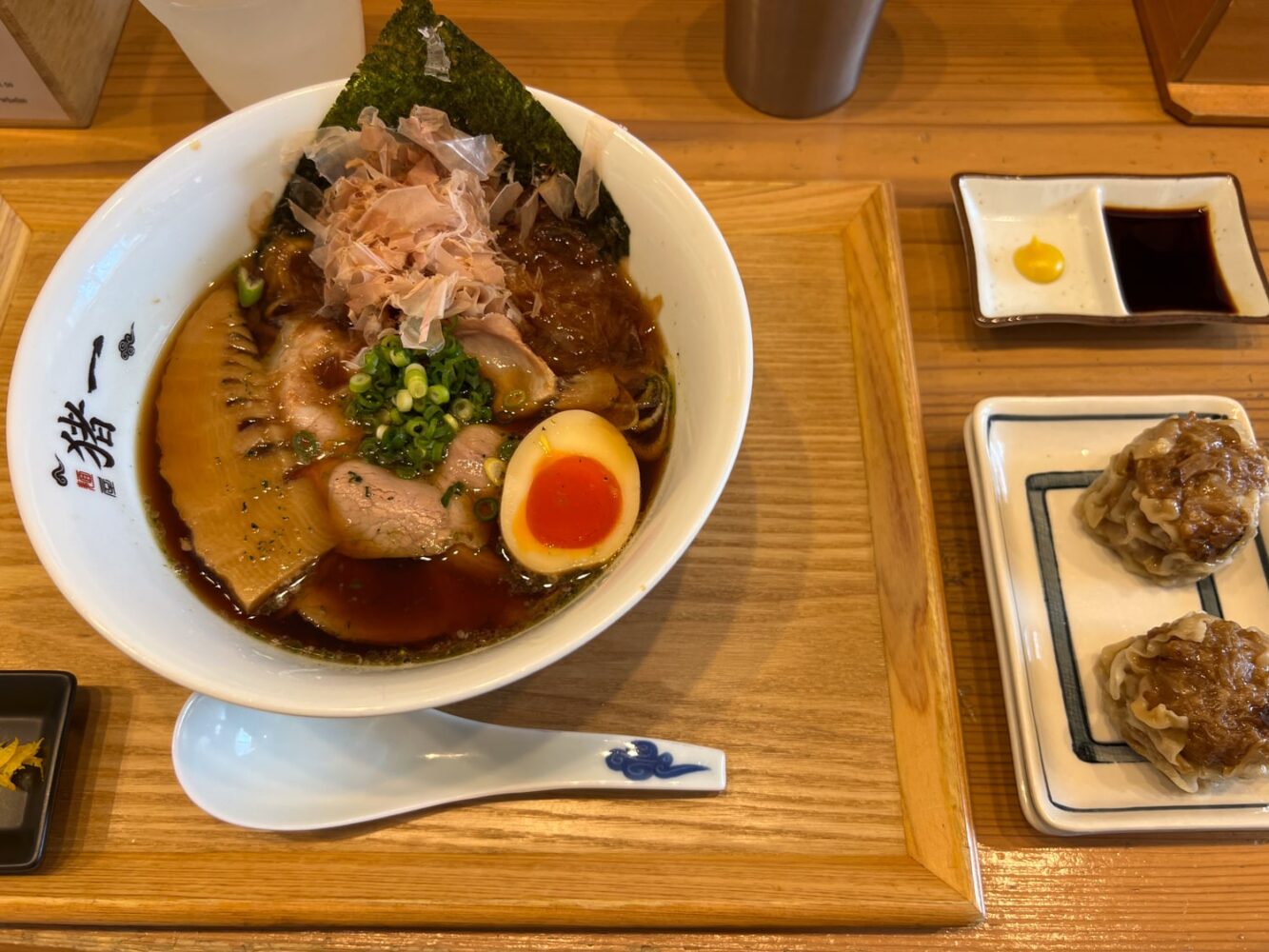
Disclaimer: This post may contain affiliate links which means I may earn a commission for bookings (at no extra cost to you). Thanks so much for your support!
I won’t lie; some popular and traditional Japanese food can be too much for me, but it’s a glutton’s paradise for adventurous foodies.
For example, takoyaki (octopus balls) are a popular Japanese snack that I avoid despite being one of the most popular things to eat in Japan. (You might consider it too if you watch My Octopus Teacher 🐙.)
Even though I’ve been to Japan three times, I still have hundreds of dishes to discover.
But the ones featured below are, in my opinion, the must-try foods to eat if you want an authentic Japanese food experience and are a first-time visitor.
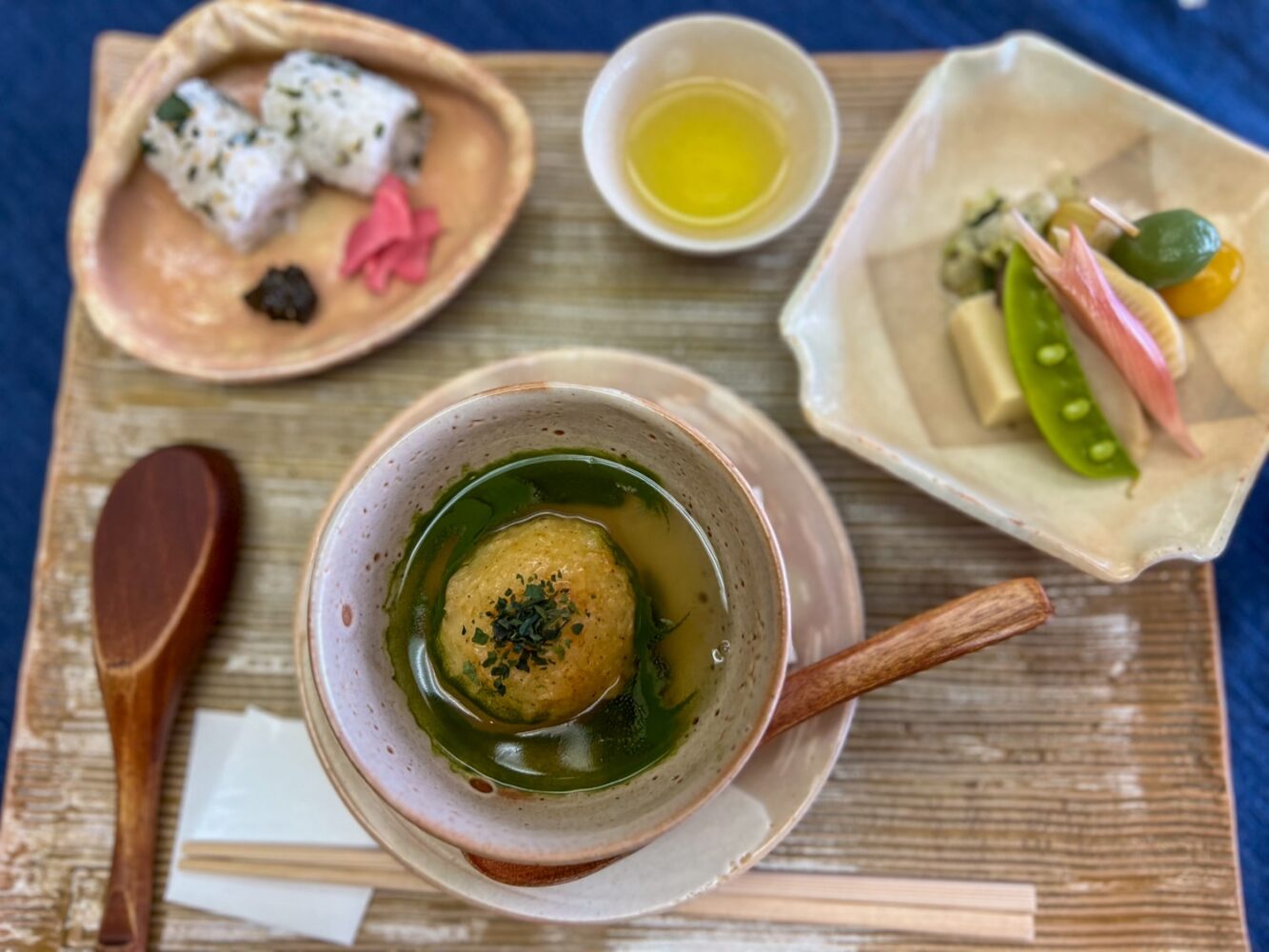
Whether it’s your first time eating in Japan or not, you must save this Japanese food list!
I have a messier version of this list on my phone for my own sake, so I can check off a new dish each time I eat at a restaurant or street food market.
From the bizarre to the drool-worthy, here are my recommendations for what to eat in Japan!
P.S. Make sure to bookmark this Japanese food guide, as I’ll add to it as I learn (and try) more food while living in Japan!
show
Best Foods to Eat in Japan – My Japanese Food Bucket List!
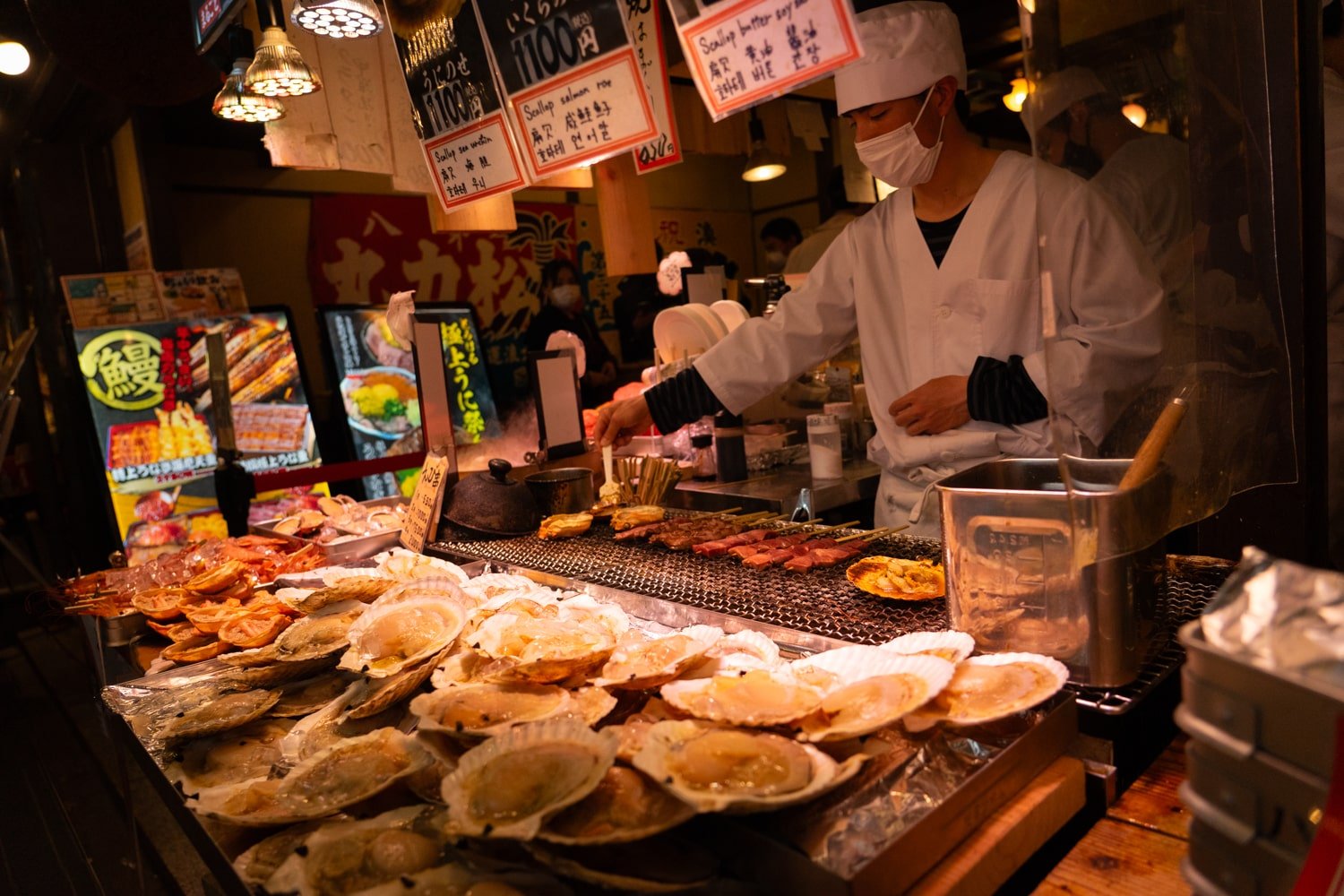
The bullet list below offers a quick overview of the Japanese foods I’ll cover in this guide! Read more below for their descriptions and why you should try them.
- Okonomiyaki
- Soba (cold + hot)
- Gyukatsu
- Udon (+ curry udon)
- Yakitori
- Shabu-shabu
- Mochi (matcha, strawberry, miso rice mochi, etc)
- Tofu (Hiyayakko, Yuba, Agedashi)
- Bento
- Sushi + sashimi (conveyor belt + omakase)
- Kabayaki
- Taiyaki (Obanyaki, Dorayaki)
- Tonkatsu
- Chicken karaage
- Umeshu + sake
- Wagyu beef/skewers
- Tempura
- Gyoza
- Ramen
1. Okonomiyaki (“Savory Pancake”)
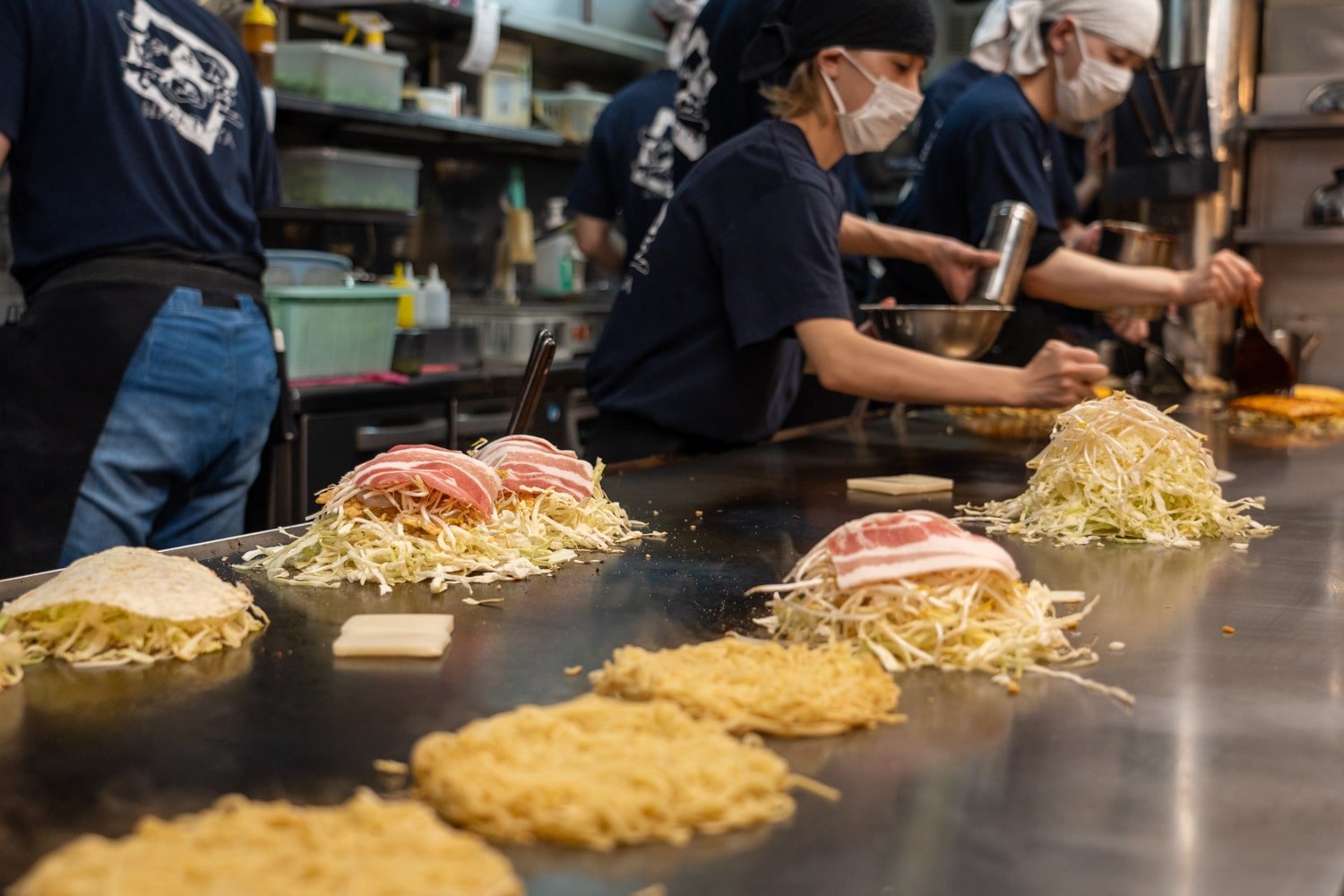
Whether you try the Osaka style or the Hiroshima style, okonomiyaki is as fun to eat as it is to say.
Okonomiyaki is basically called the “Japanese savory pancake.”
While the exact ingredients vary based on the region, the basic makeup is shredded cabbage and wheat flour batter that is grilled on a teppan (hot metal plate or griddle) along with other ingredients (e.g., pork, squid, green onion, cheese, etc.).
By the way, okonomiyaki is vegetarian-friendly, and you can choose different combos to avoid pork, squid, or other ingredients.
However you like it, this classic savory Japanese dish is a must-try for the flavors and the experience, as you’ll cut and serve yourself your okonomiyaki right off the griddle.
Yep! Restaurants serving okonomiyaki are special because you can sit at the bar before the griddle to watch the chefs prepare your okonomiyaki right before you.
Once ready, you can cut your okonomiyaki into small pie sections to serve on your plate.
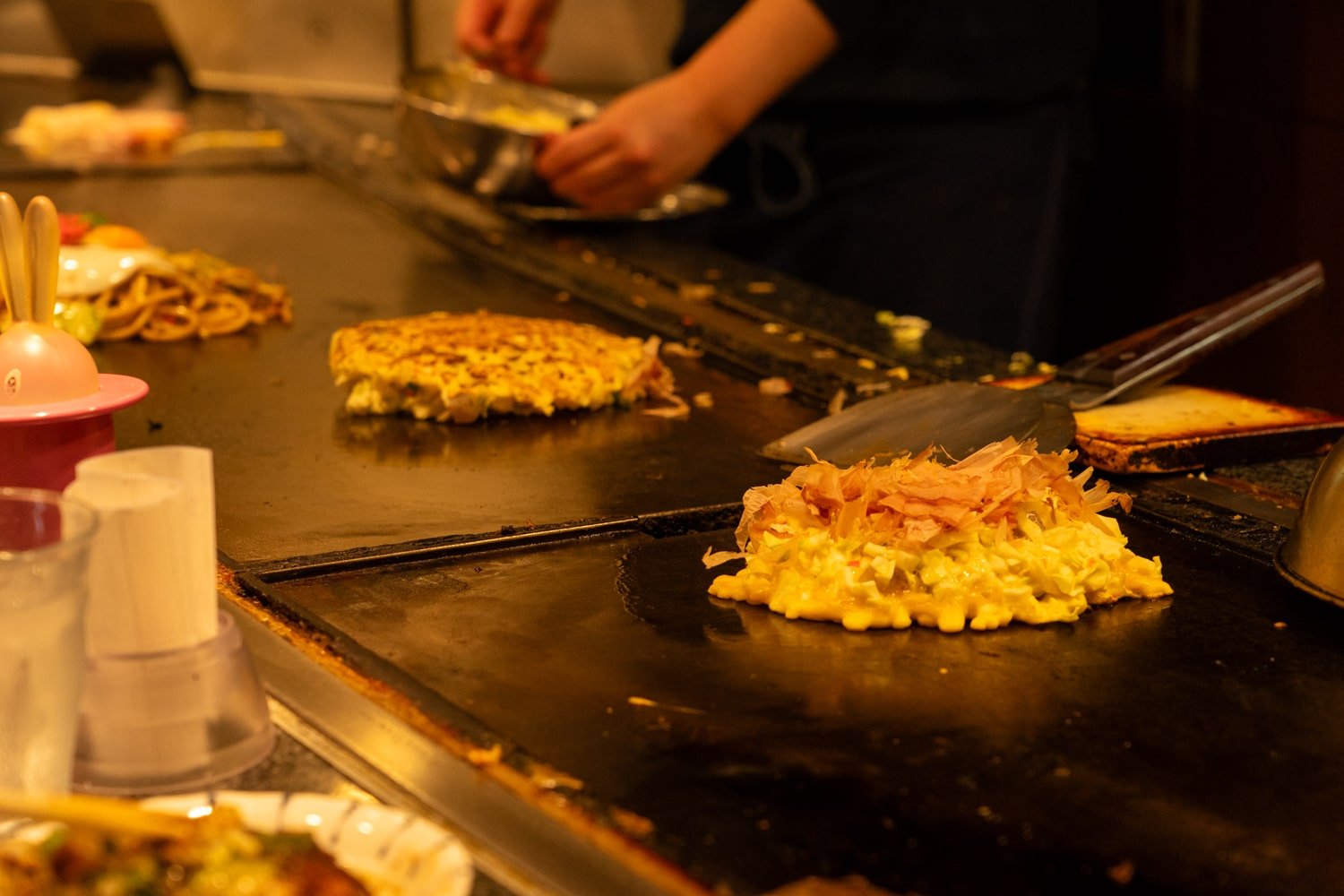
Feel free to top your okonomiyaki with more of the thick, brown sauce it usually comes with, which tastes essentially like the gooey, sweet cousin of Worcestershire sauce. Mayonnaise is also a popular dressing. The two together = 💣 🤤.
Whenever I go out to eat okonomiyaki, I’m intentional about it because the quality greatly differs depending on where you go. Aim for a restaurant that specializes in okonomiyaki.
Osaka is the most popular place to try okonomiyaki. The style of okonomiyaki in Osaka mixes all the ingredients together in one big hodgepodge.
In contrast, the Hiroshima-style okonomiyaki layers the ingredients—it’s my favorite of the two (that I’ve tried so far).
If you’re in Osaka, check out Mitsuno in Dotonbori, and if you find yourself in Hiroshima, go to Nagataya!
2. Soba (Cold & Hot)
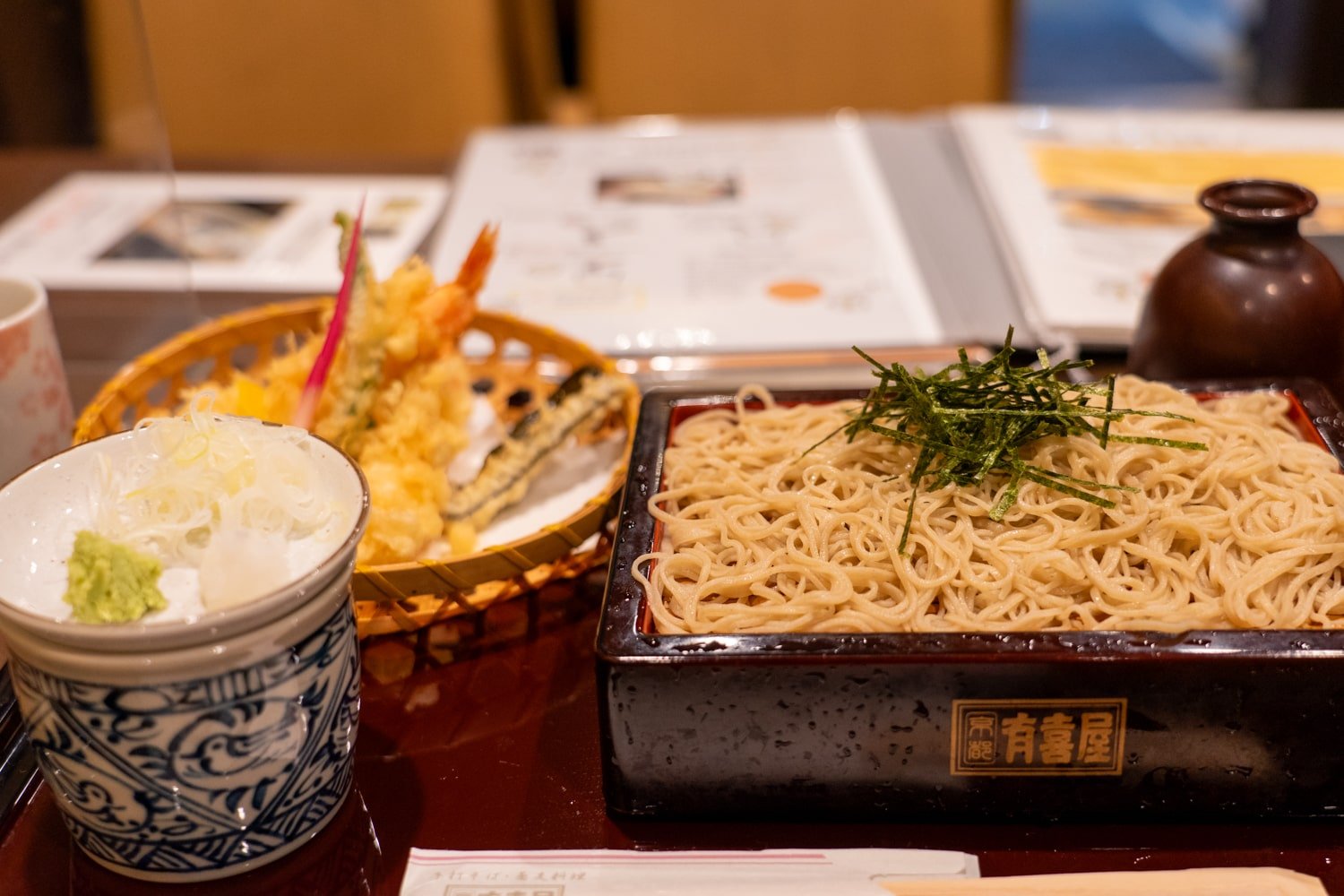
Simply delicious is what I categorize soba as.
Made from buckwheat noodles, soba is a Japanese food staple. You can try it cold (preferred) or hot in a soup.
I prefer enjoying it cold, as this is when you can really taste the simple goodness of the buckwheat with a side of dashi, green onion, and salt.
The first time I ate cold soba noodles, I had to learn a 7-step routine. Traditionally, you first try the soba noodles plain before tasting them lightly dipped in salt.
Next, you can dip it into a mixture of dashi, green onion, and minced ginger. You can add more/less of these side ingredients depending on your preference.
I love how cold soba feels like an art. I frequently eat this Japanese dish because the noodles are scrumptious with salt and dashi sauce. You can also order them with a side of vegetable or shrimp tempura (so good). The combo is delicious!
If you want to enjoy soba like a Japanese local, make sure to pour the vase of hot water (in which the soba noodles are cooked) into your dashi broth bowl and drink it at the end of your meal.
The nourishing broth concludes the soba (cold) noodle experience perfectly!
3. Gyukatsu (Beef Cutlet)
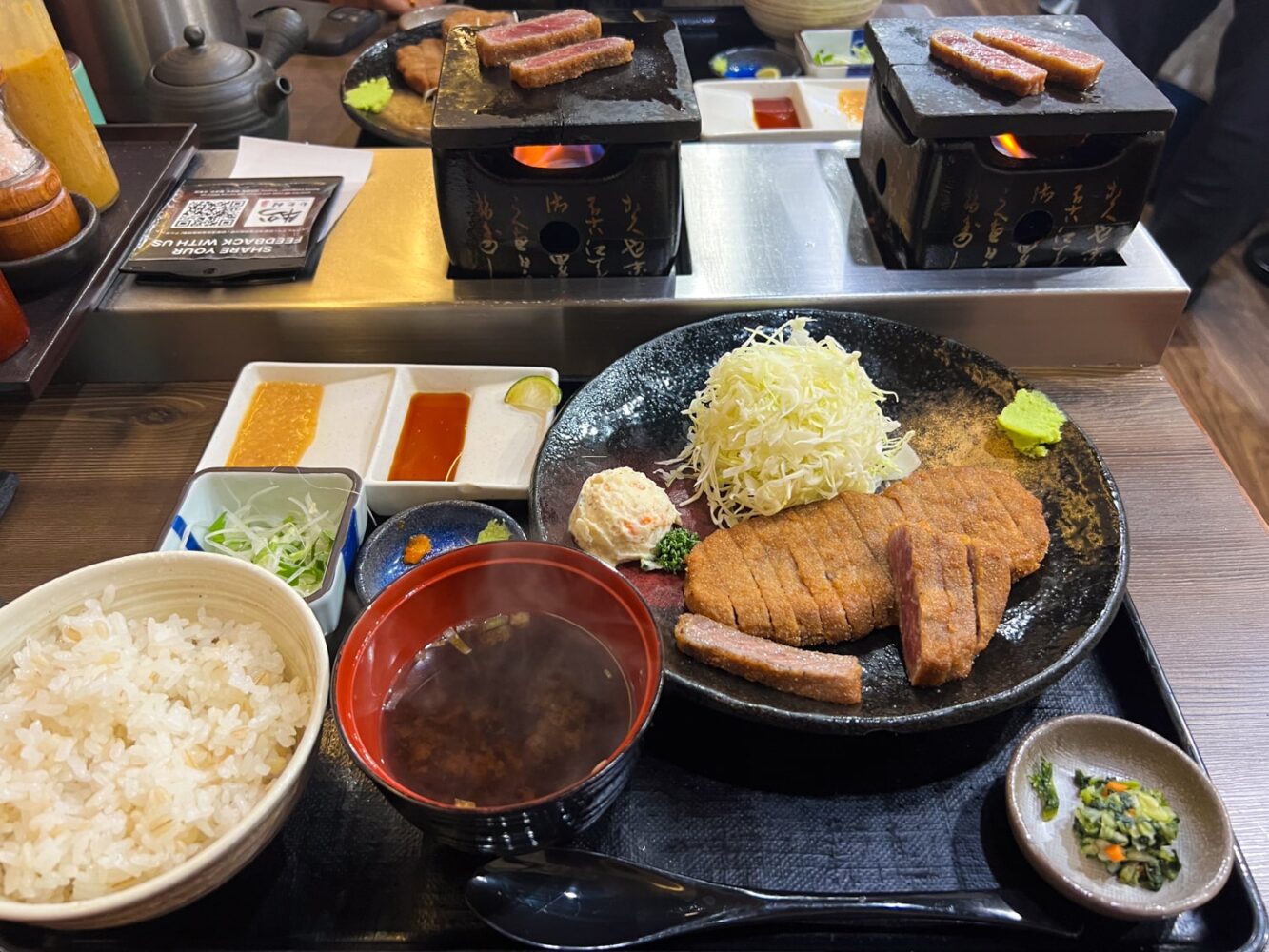
Gyukatsu is the Japanese dish that converted me from a mostly vegetarian/vegan diet to eating meat (😂).
I hadn’t eaten beef in several years but decided to try gyukatsu to immerse myself in Japanese food culture. And now it’s one of my favorite meals to eat in Japan!!
Gyukatsu is a beef cutlet served uncooked and lightly breaded on the sides. You then grill it on a small square skillet right at your table (that your waiter will light for you).
The beef cutlet is usually served as a meal set, which typically includes a small miso soup, a serving of rice, shredded cabbage/salad, grated yam, Japanese pickle, and dips/dressings such as wasabi, horseradish, and rock salt.
When you order the set, it will be by weight (for example, the “small set” might be 130g of meat, whereas the larger meal set would be 260g).
With your chopsticks, place the mouth-sized slices one or two at a time on the grill to cook them (meat side down so the breading doesn’t stick to the skillet!). If you cook until medium-rare, the meat will be tender and melt like butter!
I first had gyukatsu in Akihabara (Tokyo) at the Gyukatsu Ichi Ni San. I went in the early afternoon for lunch and queued for nearly two hours!
The second time I had gyukatsu was for an early dinner at Gyokatsu Motomura in Kabukicho, Shinjuku. They have several locations across Japan!
4. Udon
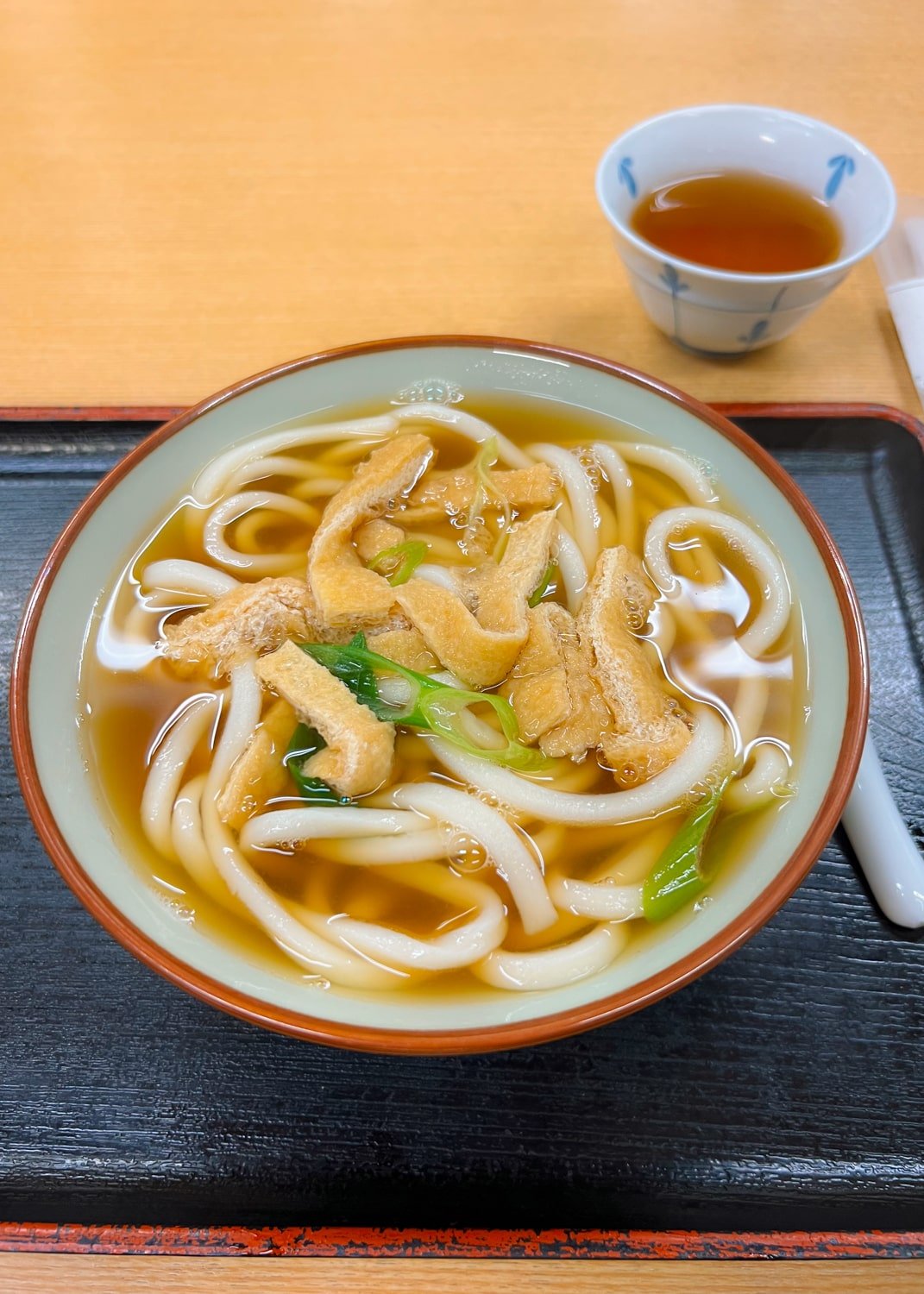
Udon is one of Japan’s three most popular noodle dishes (with the others being ramen and soba). Udon is made from thick wheat flour noodles, which are usually served in a savory broth called kakejiru.
In my experience, udon is a delicious, often budget-friendly Japanese meal you can customize. Order it plain or with tempura, vegetables, meat, or tofu.
“The most common way to serve udon, hot udon soup is any dish where udon noodles are served in a hot savoury broth called kakejiru, which is made from a mixture of soy sauce, dashi stock, and mirin rice wine.”
Believe it or not, there are roughly eleven types of udon noodles in Japan, which vary based on prefecture and dish.
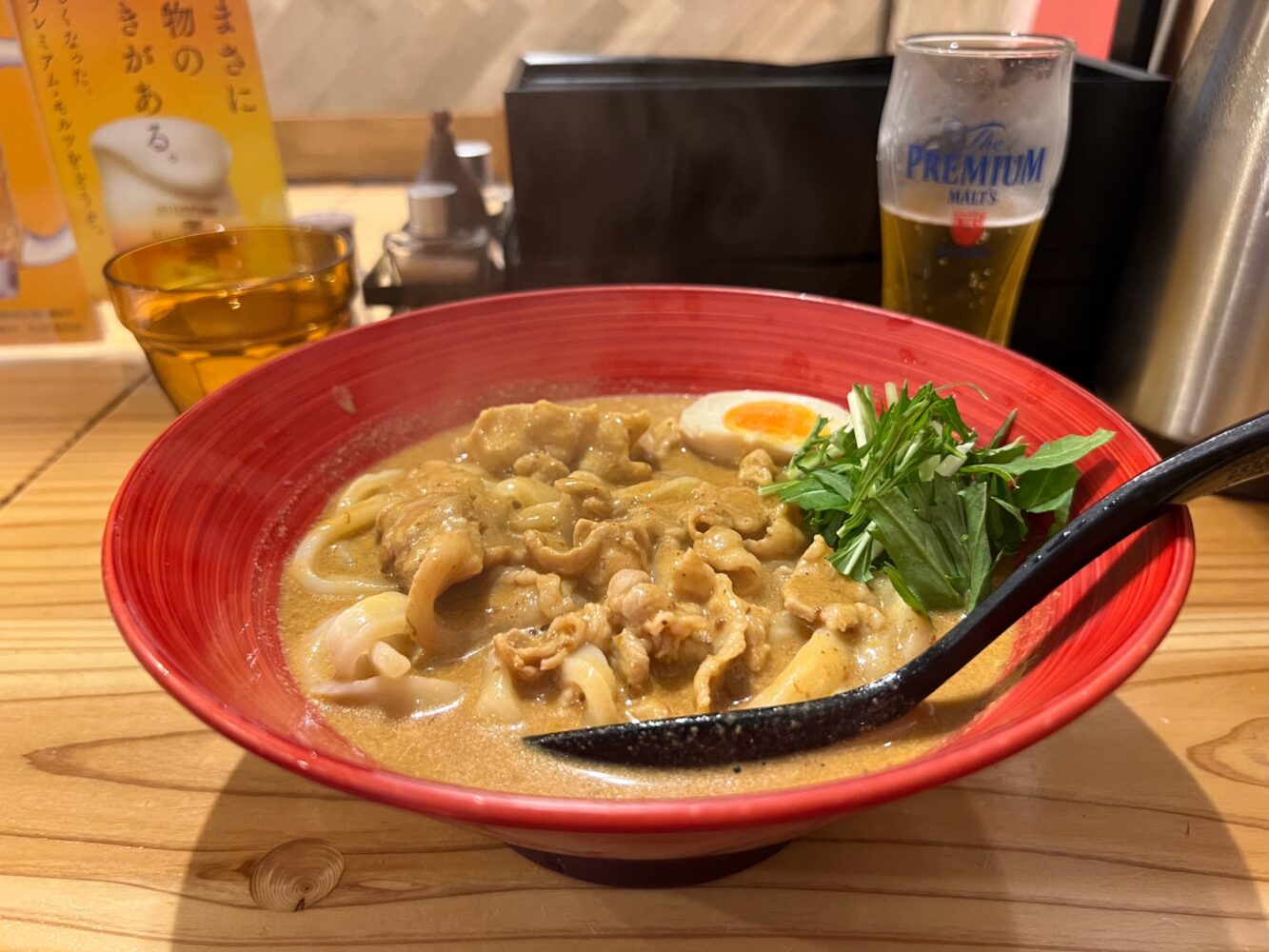
For example, one specialty of udon that I tried was curry udon; it was such an explosion of flavor compared to regular udon, so I recommend trying several types!
5. Yakitori (Chicken Skewers)
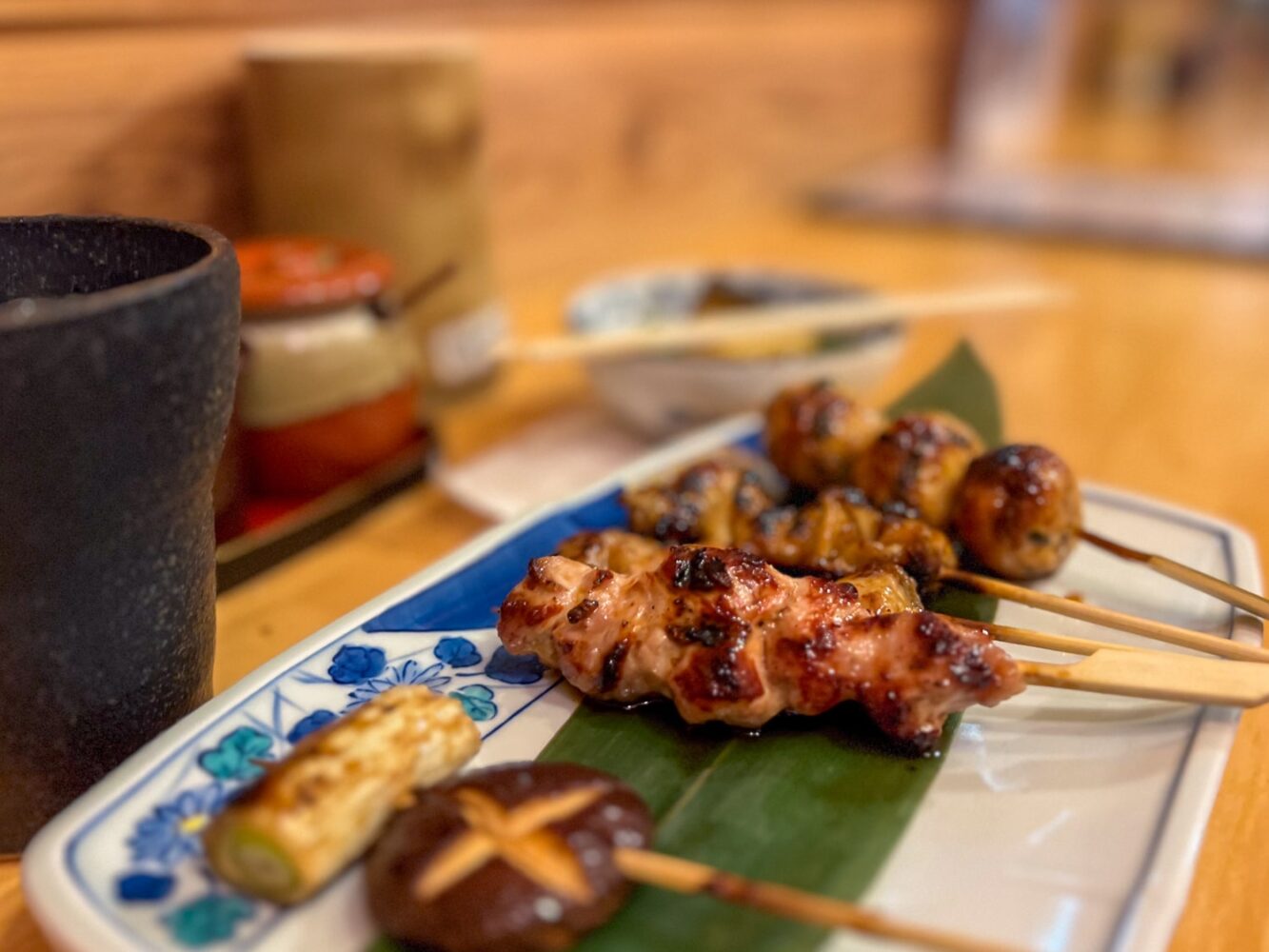
Charcoal-grilled chicken meat threaded on a bamboo stick and bathed in a sweet, savory, tangy glaze… That’s essentially what yakitori is.
Yakitori is a budget-friendly staple in izakayas (Japanese pubs) and is also popular to enjoy at street food markets and festivals.
Chicken is the meat of choice for yakitori, but there are several varieties of yakitori based on the cut of meat. For example:
- Negima (leeks and chicken thigh; one of the most popular yakitori types).
- Mune (chicken breast).
- Momo (chicken thigh).
- Torikawa (crispy chicken skin; this one is underrated!).
- Tsukune (ground chicken “meatballs” mixed with egg and seasonings; my favorite way to eat yakitori!).
If you don’t like the sweet style of yakitori sauce (called tare), you can order your yakitori plain or with salt (called shio).
This popular Japanese dish is a must-try whether you eat meat or not and pairs well with a group of friends and a cold beer.
PS — if you’re vegetarian, you may be able to order yakitori veggie skewers, which can include mushrooms, onion, eggplant, shishito peppers, and more.
6. Shabu Shabu (Hot Pot)
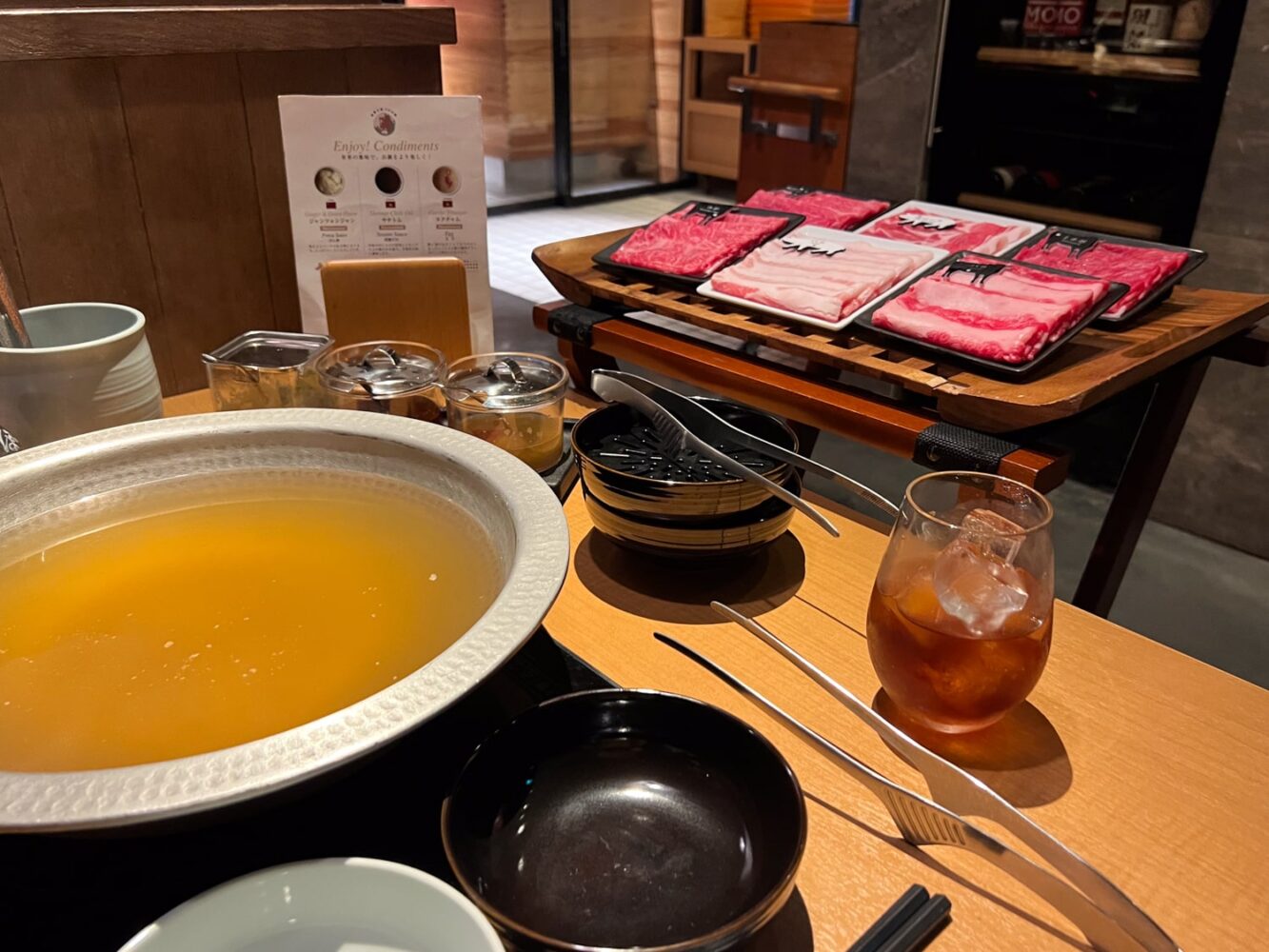
Here is another experiential Japanese food that is a must-try for meat-eaters.
Shabu-shabu is a type of Japanese hot pot dish (nabemono) that involves swishing (hence the name shabu, which is the sound of swishing!) thinly sliced raw beef or pork in a piping hot broth to cook until desired.
Despite being served with plenty of vegetables, salad, and yummy enoki mushrooms, this dish is extremely meat-heavy.
Another similar Japanese hot pot dish that you may hear of is sukiyaki.
Compared to shabu shabu, sukiyaki is said to taste sweeter and, as for the cooking style, is slowly simmered in a shallow pot. (You can often find restaurants specializing in both since they’re similar.)
Eating shabu-shabu is among the pricier meal experiences to have in Japan, as it usually involves an all-you-can-eat dinner set or buffet at a fixed price (with sets costing anywhere from 2000 yen up to 10,000 yen or more).
The shabu shabu I shared with my Japanese friend at Mo-Mo Paradise in Kabukicho (Shinjuku) was excellent! This location first opened in 1993 and is a long-time local favorite. Just make sure to go hungry. 😋
7. Mochi (+ Dango & Wagashi)
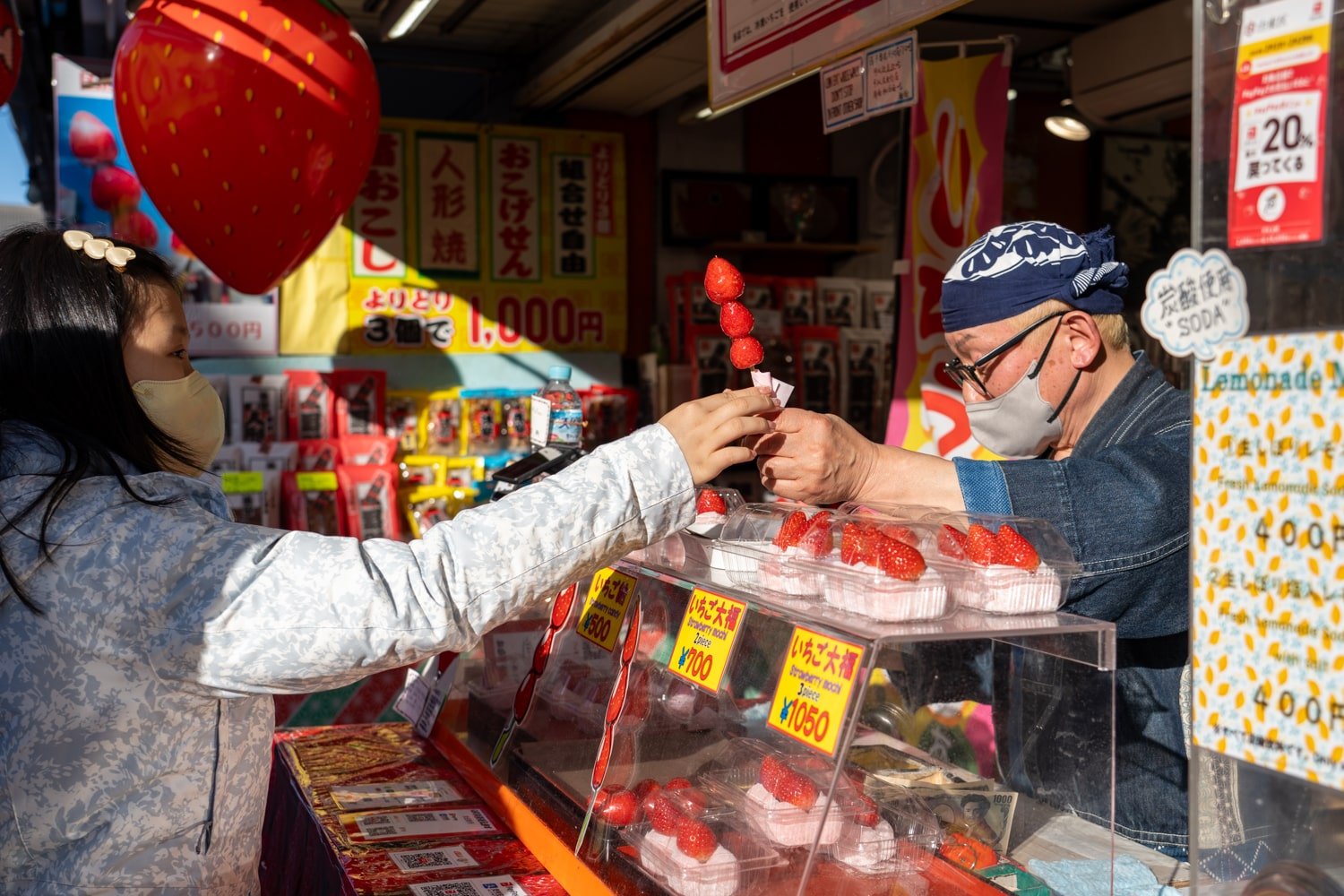
Now, it’s time for something sweet!
Mochi is a deliciously chewy Japanese dessert made from glutinous, short-grain rice called mochigome that’s soaked, steamed, pounded, and then molded into ball shapes.
Most often, regular mochi balls (daifuku (大福餅)) are filled with red bean paste (anko), but there are many types of mochi for your sweet tooth!
For example, there are:
- matcha mochi
- strawberry mochi 🍓 (ichigo daifuku; my favorite!),
- warabi mochi,
- yatsuhashi mochi (a particular specialty from Kyoto),
- and mochi filled with ice cream!
You can find these sweet and sticky rice cakes all across Japan, with specialty stores specializing in particular types of mochi.
Dango is another similar Japanese sweet that you shouldn’t miss out on while in Japan! Unlike mochi, however, dango are made from a mix of rice flours and are usually firmer, denser, bathed in a sauce or glaze rather than stuffed, and served on a skewer.
Finally, I’ll mention wagashi here as it’s a traditional Japanese confection that is culturally and ceremonially significant. Wagashi are plant-based sweets often served alongside green tea, for example, during Japanese tea ceremonies like the one I did in Kyoto (read my Kyoto Kimono Tea Ceremony experience!).
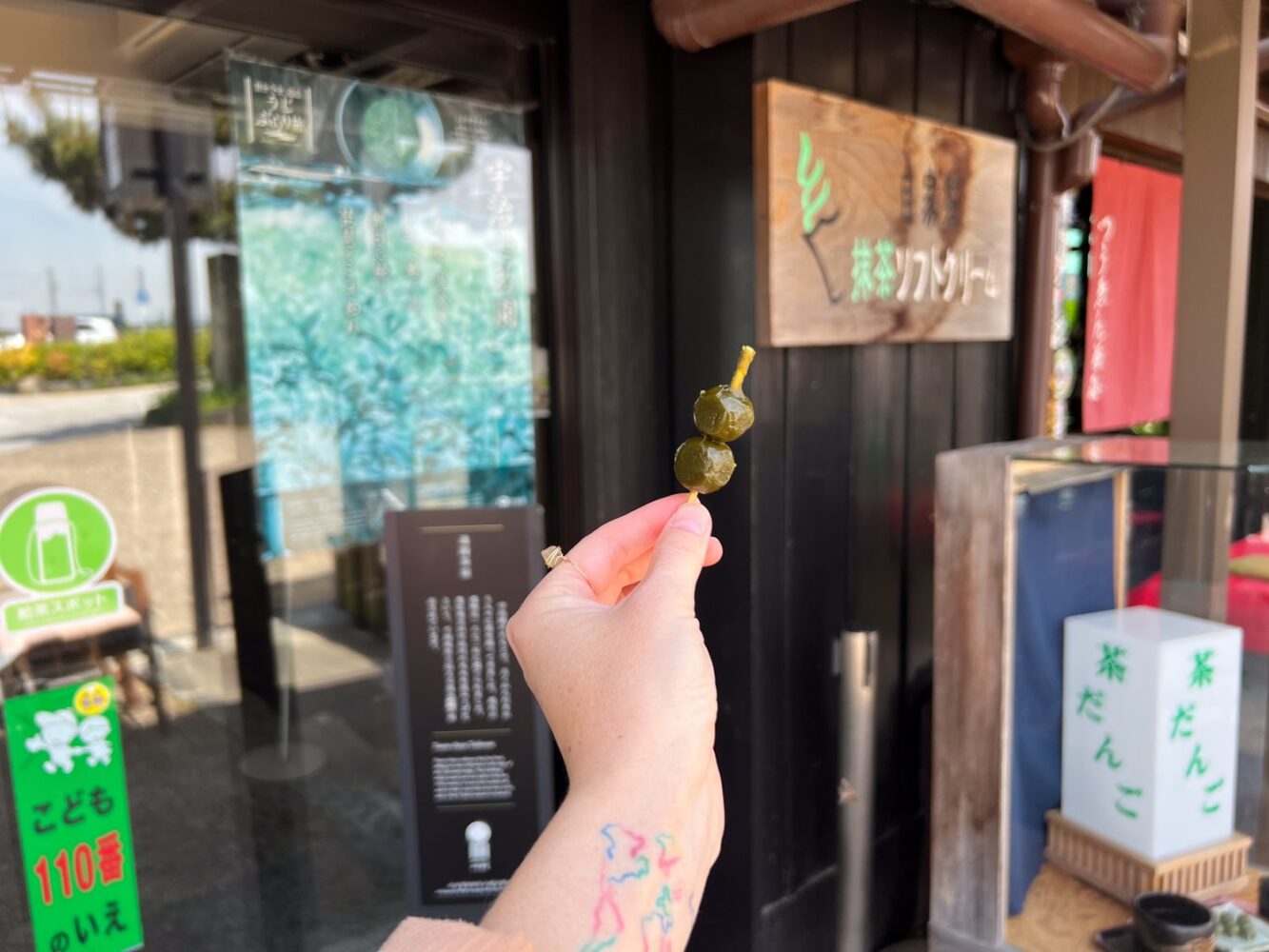
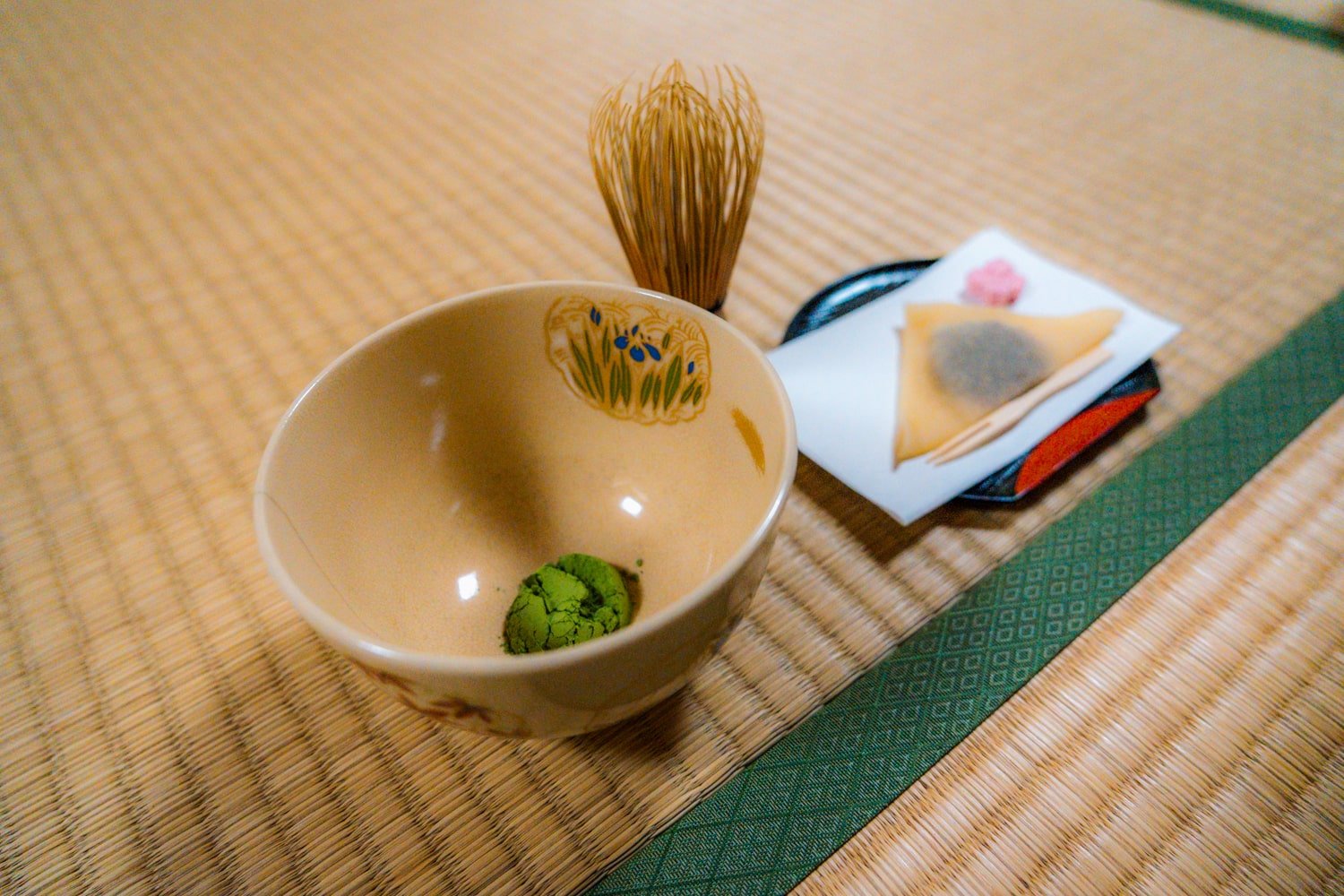
8. Tofu Dishes
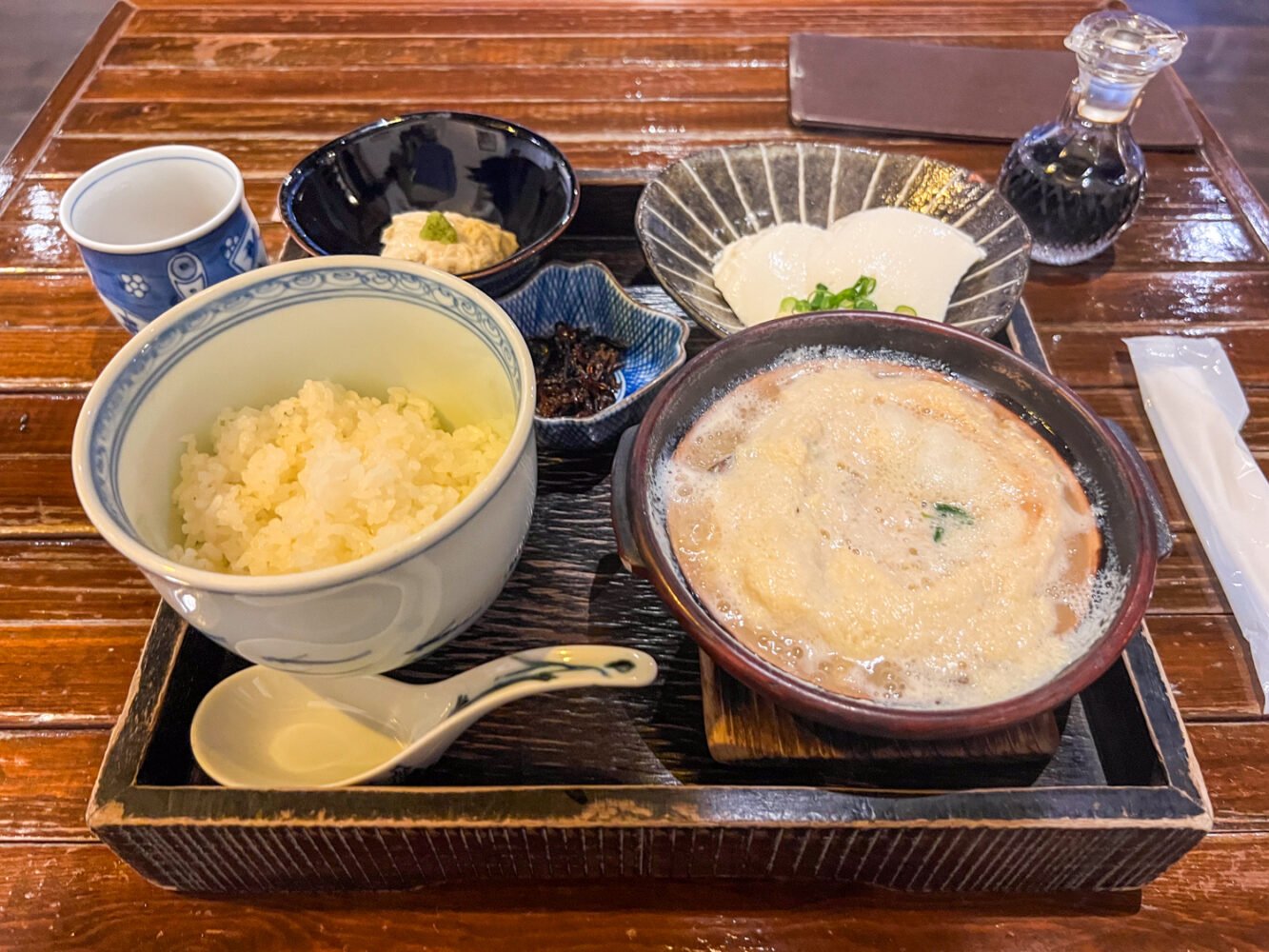
You haven’t truly experienced tofu until you’ve been to Japan!
There are dozens of ways to enjoy Japanese tofu, a veritable staple of Japanese cuisine. Eat it cold, hot, deep-fried, stir-fried, as “sashimi,” or in soups, sweets, and more.
My favorite tofu dishes that I’ve tried in Japan are:
- Agedashi dōfu
- Hiyayakko
- Inari sushi
- And any soup with silken or fried tofu!
Agedashi is a hot, crispy tofu block served in a small dish and bathed in dashi sauce. It’s typically accompanied by green onions and grated radish or ginger.
Hiyayakko is a simple silky block of chilled tofu served with green onions, ginger, radish, and maybe dried bonito flakes.
Inari Sushi (also spelled inarizushi) are deep-fried tofu pockets made from tofu skin (yuba) that wrap around an onigiri-type ball of vinegared rice. They are a specialty from Kyoto because of the Fushimi Inari Shrine and the belief that the fox’s favorite food is deep-fried tofu!
9. Bento Box (Japanese Take-Out)
Like much of Japanese cuisine, Japanese bentō is a cultural experience.
Anytime you travel on a high-speed train in Japan, make sure to pick up a Japanese bento box beforehand!
The ingredients of bento boxes vary, but traditionally, it is designed to be a ready-made take-out meal, so you can expect rice or noodles as the base, accompanied by a portion of protein such as salmon or fish, chicken or pork, or eggs and vegetables.
You can find bentos in almost any station across Japan and many convenience stores. 7-Eleven has fairly tasty bento boxes, but the ones at train stations are usually of better quality.
10. Sushi (& Its Variations)
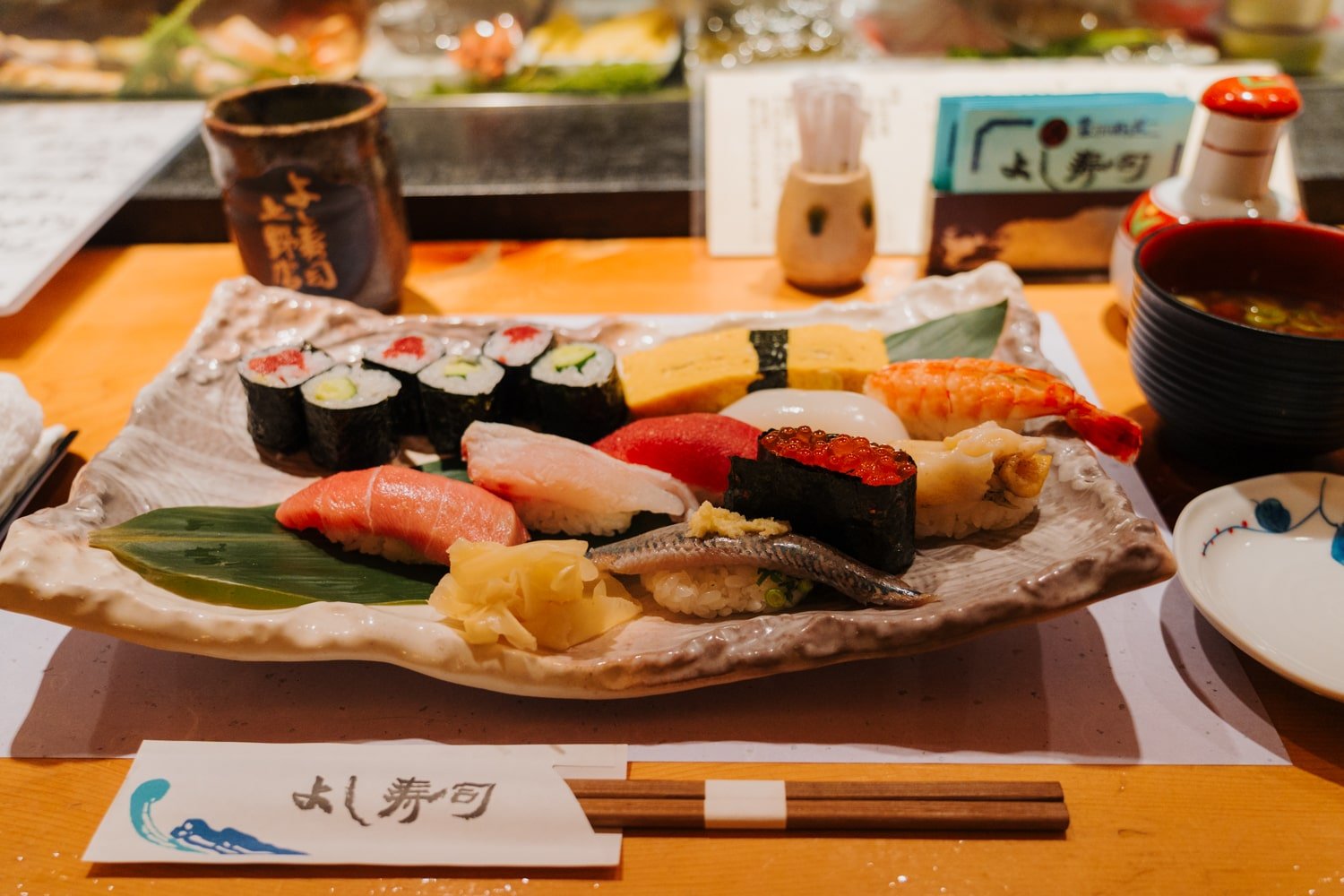
Sushi, other than ramen, is probably Japan’s most popular and iconic food.
Under the umbrella term, sushi is a Japanese dish of raw fish or seafood served with vinegared sushi rice.
There are many types of sushi to try, including types of fish/seafood served in sushi and cuts (of fish!). Not all sushi is created equal!!
Here are the different categories of sushi at a glance:
Nigiri is the type of sushi you most likely know well: a slice of raw fish over an oval-shaped clump of rice, often served with a side of pickled ginger, wasabi, and soy sauce.
Maki is the traditional sushi roll, sliced into bite-sized, circular pieces with seaweed, rice, and fish (or veggies or fruit for plant-based maki sushi) on the inside.
Its opposite is uramaki, where the rice is on the outside, and the seaweed envelops the ingredients on the inside.
Sashimi is a variation of sushi that only includes sliced raw fish, such as salmon or tuna. Sashimi is often more expensive since the portion of raw fish is greater, and it is served without rice.
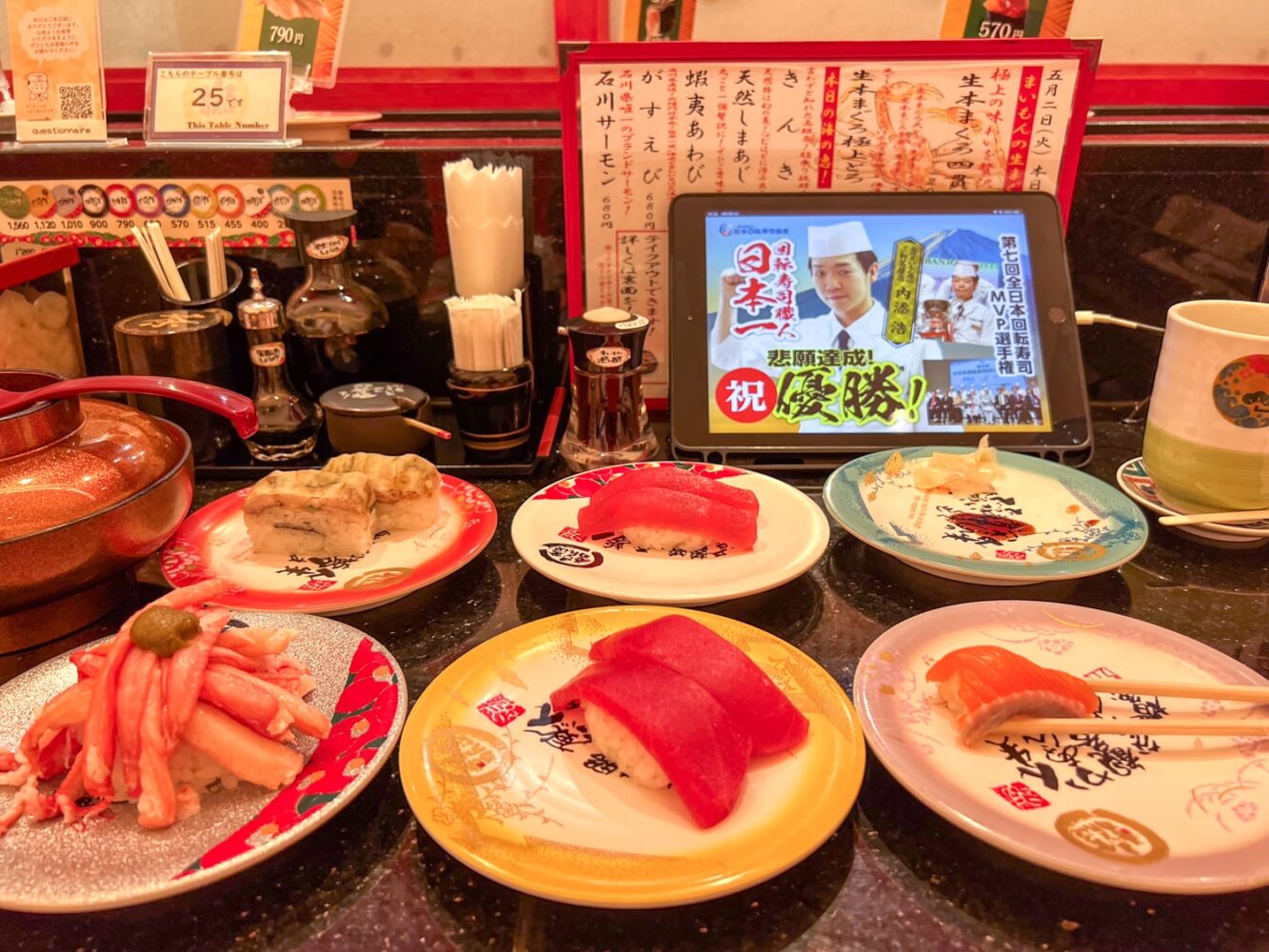
Then, there are even more types of sushi and also types of raw fish and then types of cuts (e.g., maguro is bluefin tuna, but on menus, you can choose the cut of tuna such as akami (lean), chutoro (medium-fatty), and otoro (fatty).
Ordering sushi in Japan may seem complicated at first, but once you dine out once or twice—either at a sushi restaurant where you let the chef curate the sushi set for you (omakase) or at a sushi conveyor belt where you can pick and choose—then you’ll get the hang of it!
11. Kabayaki (Grilled Fish)
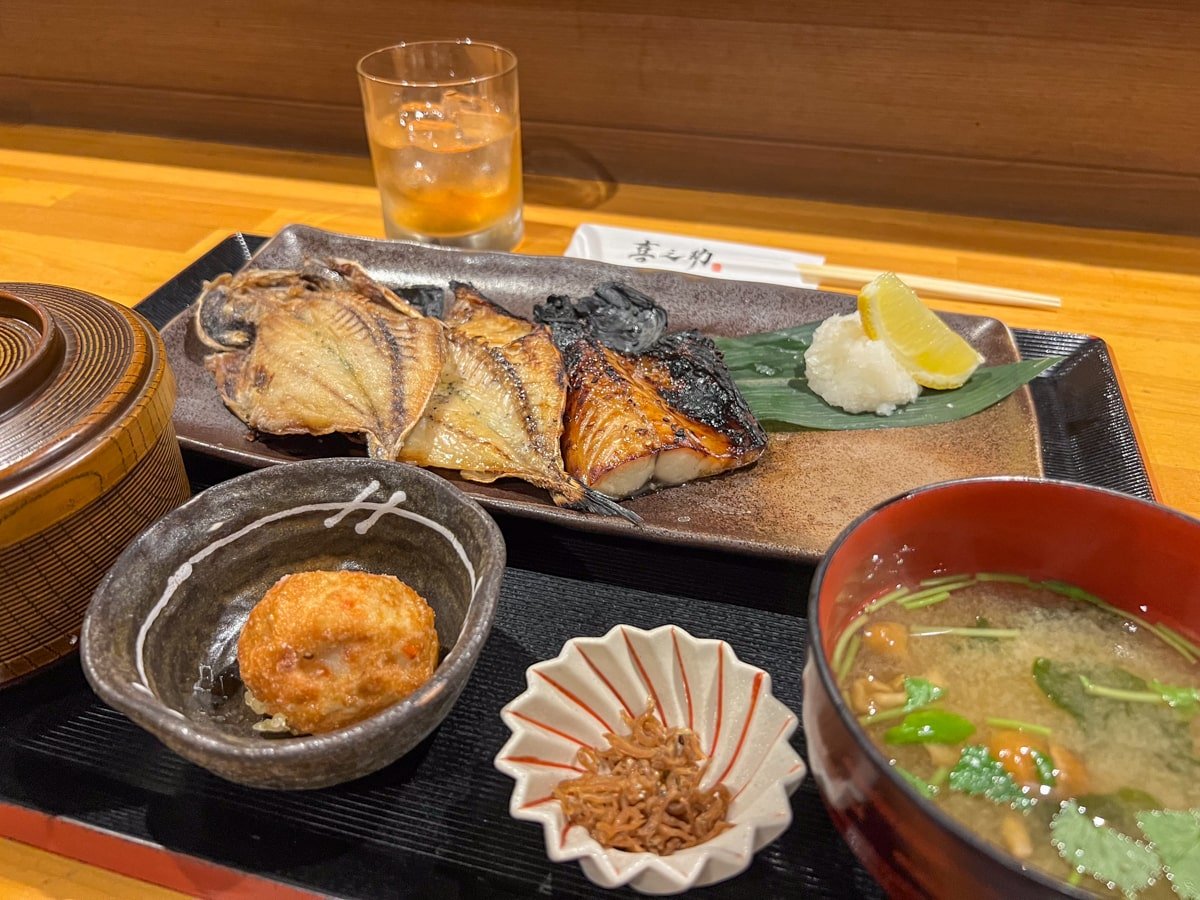
If you don’t enjoy your seafood raw, you can order kabayaki.
This term refers to the Japanese style of preparing fish by deboning and gutting it, butterflying it, and then glazing it before grilling.
You can have a variety of fish prepared kabayaki-style, but one popular dish is unagi kabayaki which is freshwater eel.
While staying in Hakone-Yumoto town in Hakone, I went to a local restaurant and tried horse mackerel kabayaki for dinner!
12. Taiyaki (+ Obanyaki)
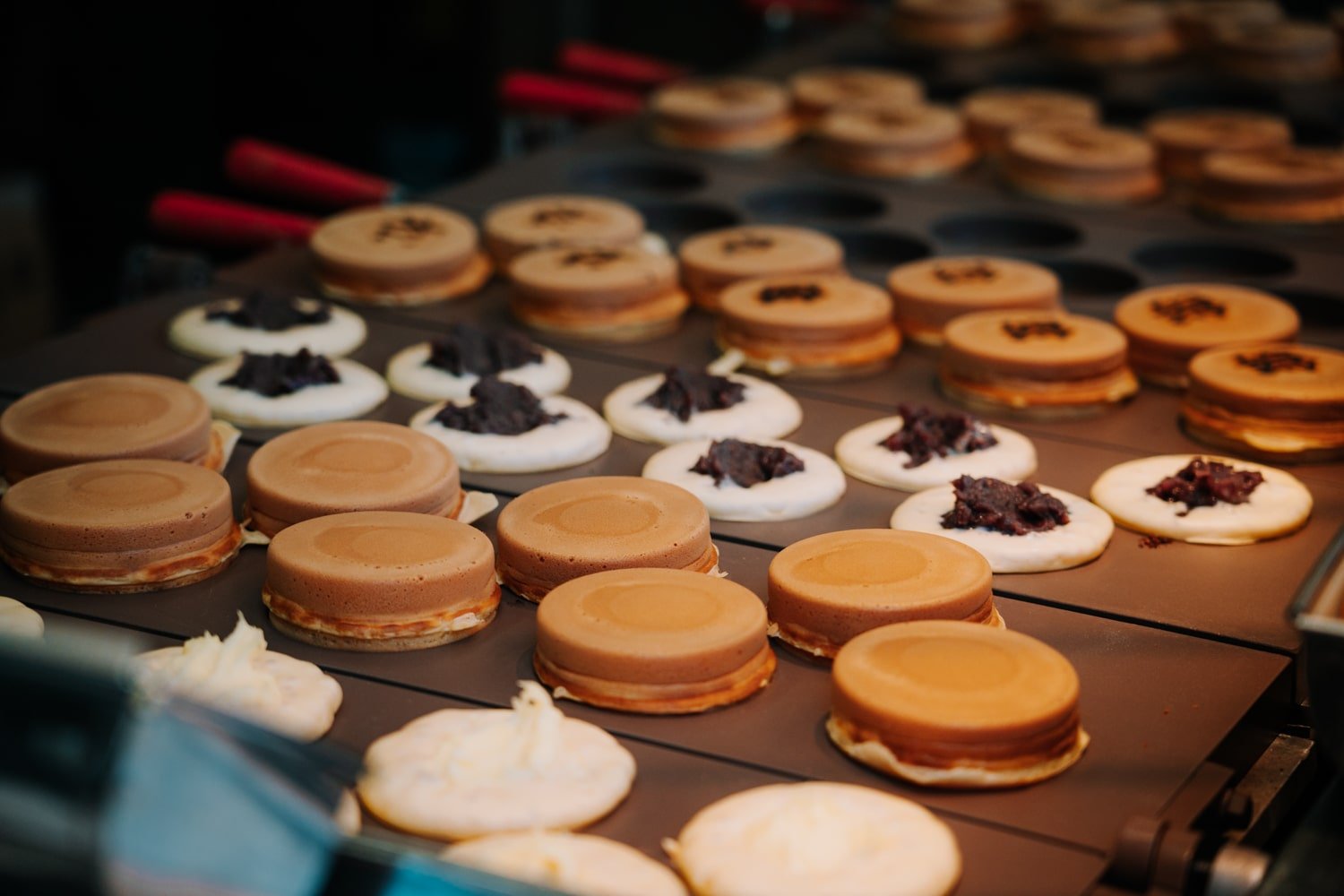
Taiyaki and obanyaki are very popular (and delicious) Japanese confections. These pastry-like sweets are easy to eat and are much-loved by locals and foreigners.
Here is the difference between the two:
Taiyaki are fish-shaped cakes traditionally filled with sweetened red or white bean paste. Nowadays, you can find taiyaki filled with custard, chocolate, and even Japanese yam (sweet potato).
Obanyaki is also a pastry filled with sweetened adzuki bean paste or custard. These look and taste more like two pancakes mushed together. They’re fluffier and lighter, too, whereas taiyaki are chewier and gooier.
There is also dorayaki, and that’s when you know the Japanese name their foods based on very technical differences. 😂
13. Tonkatsu (Pork Cutlet)
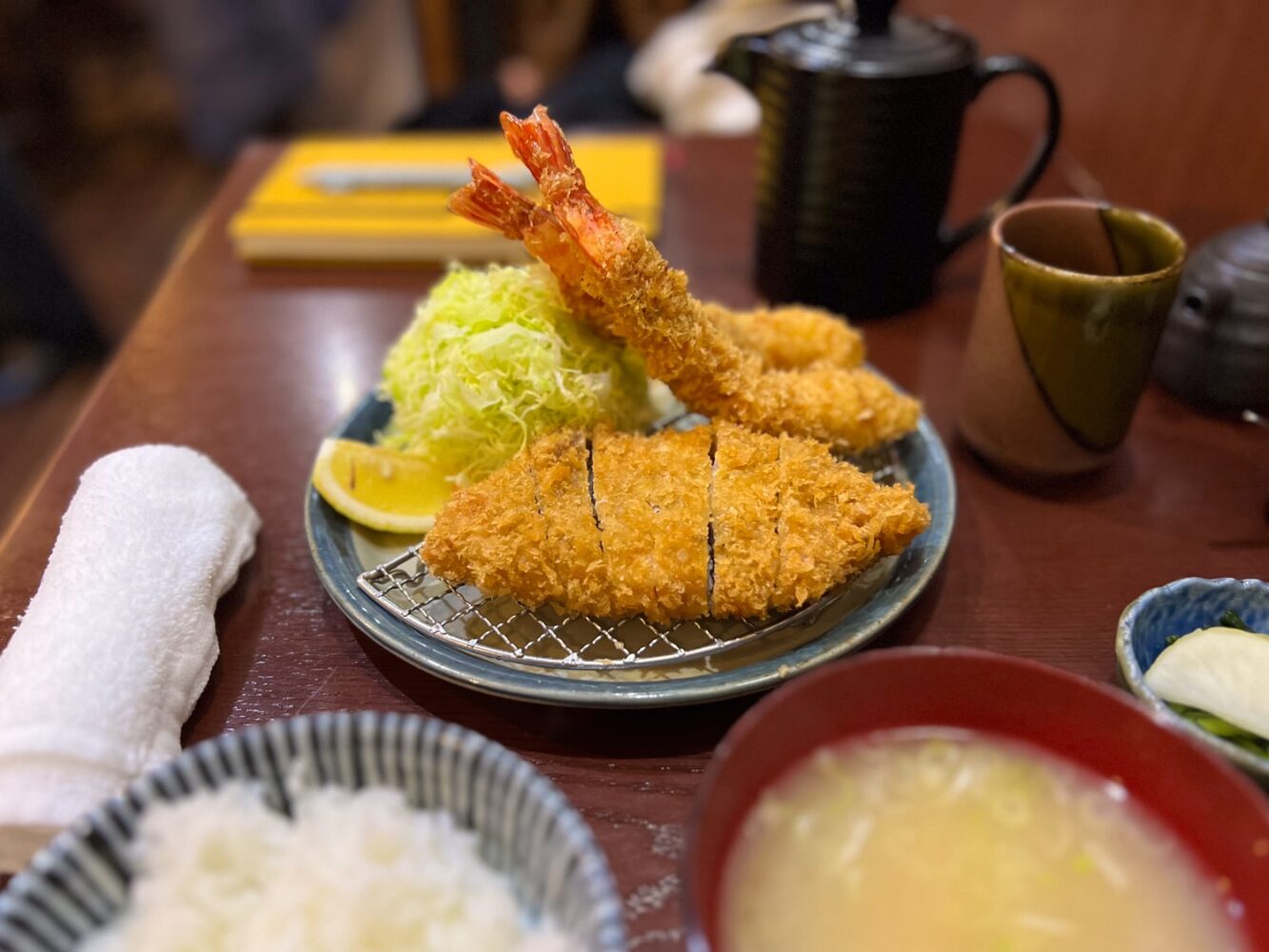
Tonkatsu is to pork cutlet as gyukatsu is to beef cutlet, but there are a few differences!
Whereas gyukatsu (#3 on this Japanese food list) is served with a dusty breading on two sides and uncooked for you to grill yourself, tonkatsu is usually served already cooked deep-fried with panko crumbs.
Tonkatsu in Japan is often served with a salad (shredded cabbage), dressings, and side bowls of miso soup and rice.
Between tonkatsu and gyukatsu, I prefer gyukatsu (the beef cutlet) for both the taste and the dining experience.
PS — Tonkatsu is not to be confused with tonkotsu. For example, tonkotsu ramen—a special type of ramen made with broth from pork bones (tonkotsu). Similar, but different!
14. Chicken Kaarage
Chicken kaarage, in short, means Japanese fried chicken. You may be thinking, well, what’s special about fried chicken?
Sure, it sounds like it could taste like fried chicken in other parts of the world, but somehow the Japanese created another level of fried chicken. They’re in their own league.
Japanese kaarage is marinated and tender on the inside and crispy and golden on the outside. It isn’t greasy or fatty, and the seasoning is perfection!
As such, Japanese fried chicken is one of the best in the world and makes for a tasty, juicy snack.
Find kaarage in izakayas, street food stalls, and bento boxes!
15. Amazake (+ Umeshu and Sake)
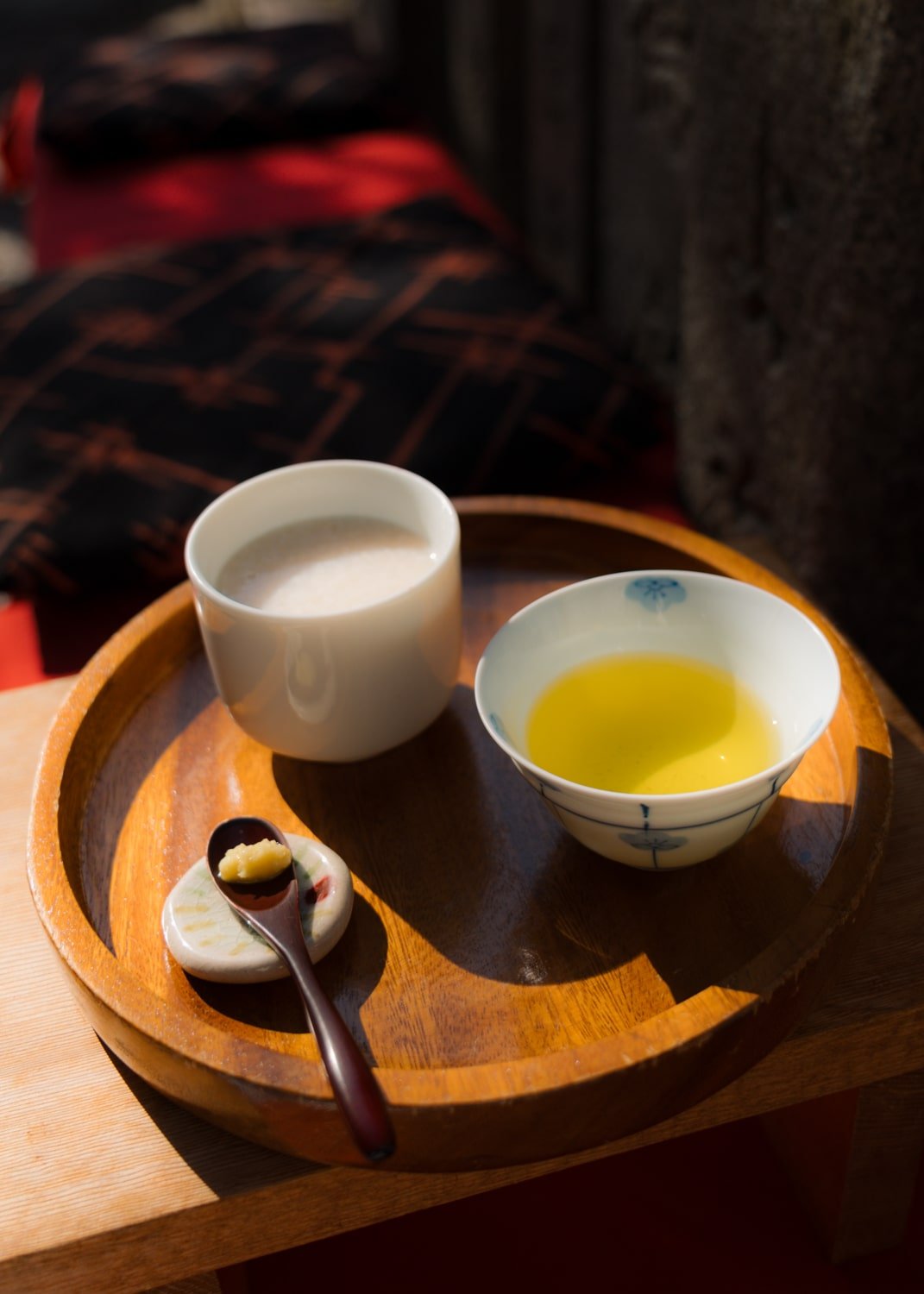
Time for a beverage break! Let me introduce you to three of my favorite Japanese drinks: amazake (a hot and sweet fermented rice drink), umeshu (plum wine) and sake (rice wine).
Most of you probably already know of sake, but it’s unlikely that you’ve tried amazake or umeshu outside of Japan.
Amazake is a chunky, hot, and sweet beverage made from fermented rice. It is non-alcoholic (or very low) and absolutely delicious, and it is a must-try in Japan!
Umeshu is simply ume plum wine, but this sweet and slightly sour liquor is truly addicting.
Enjoy it on the rocks (and it’ll taste like candy) or mixed in a fizzy club soda. If you order this as a tourist in Japan, you’ll feel like a real local!
And for sake’s sake (get it?), enjoy a jar of hot sake in Japan!! This alcoholic fermented rice wine is a Japanese drink whose reputation precedes itself.
While not all sake is of top-shelf quality, most that you’ll find in izakayas and restaurants in Japan are quality enough.
If in doubt, ask the barman or waiter for recommendations!
Aside from umeshu and sake, many Japanese salarymen and locals enjoy Japanese beers, such as Asahi, Kirin, and Sapporo, for lunch and dinner.
Interesting fact: The Japanese actually do drink quite a bit, especially in the workplace culture and social settings, as drinking is seen as a way to break down barriers, relax, and commune in honesty. That said, drinking culture in Japan can be toxic and extreme, with many employees spending all their wages on alcohol and passing out in the izakayas and clubs past 3 am!
16. Wagyu
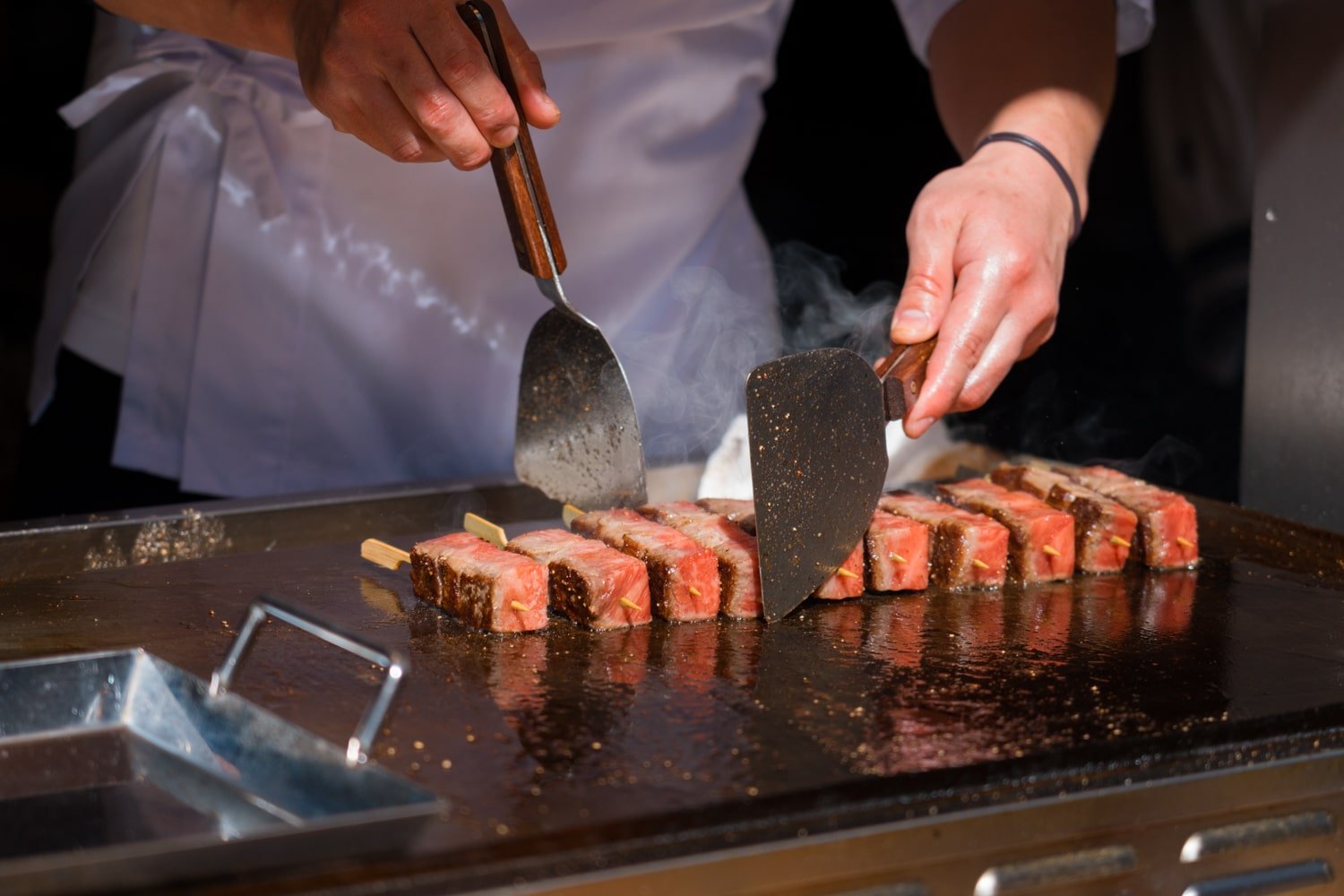
Wagyu is a type of highly-prized Japanese beef.
Moreover, Wagyu is actually the breed of Japanese cattle that produces the buttery, silky meat profile of wagyu meat the world has come to know and love.
“The name ‘Wagyu’ refers to all Japanese beef cattle, where ‘Wa’ means Japanese and ‘gyu’ means cow.”
Kobe meat, for example, is a type of marbled wagyu that comes from a strain of Wagyu cattle.
So, if you’re wondering whether to eat Kobe or Wagyu beef in Japan, the answer is either, both, or neither, depending on your preferences and diet!
You can find restaurants specializing in Wagyu, and this is where I’d recommend trying it if it’s your first time. Osaka or Kobe (hence the name) are great cities in which to find excellent quality wagyu meat.
I had wagyu skewers at the Tsukiji Outer Market in Tokyo (famous for its sashimi and other foods), and it did not disappoint! It was buttery, silky, and seasoned just right—as promised.
17. Tempura
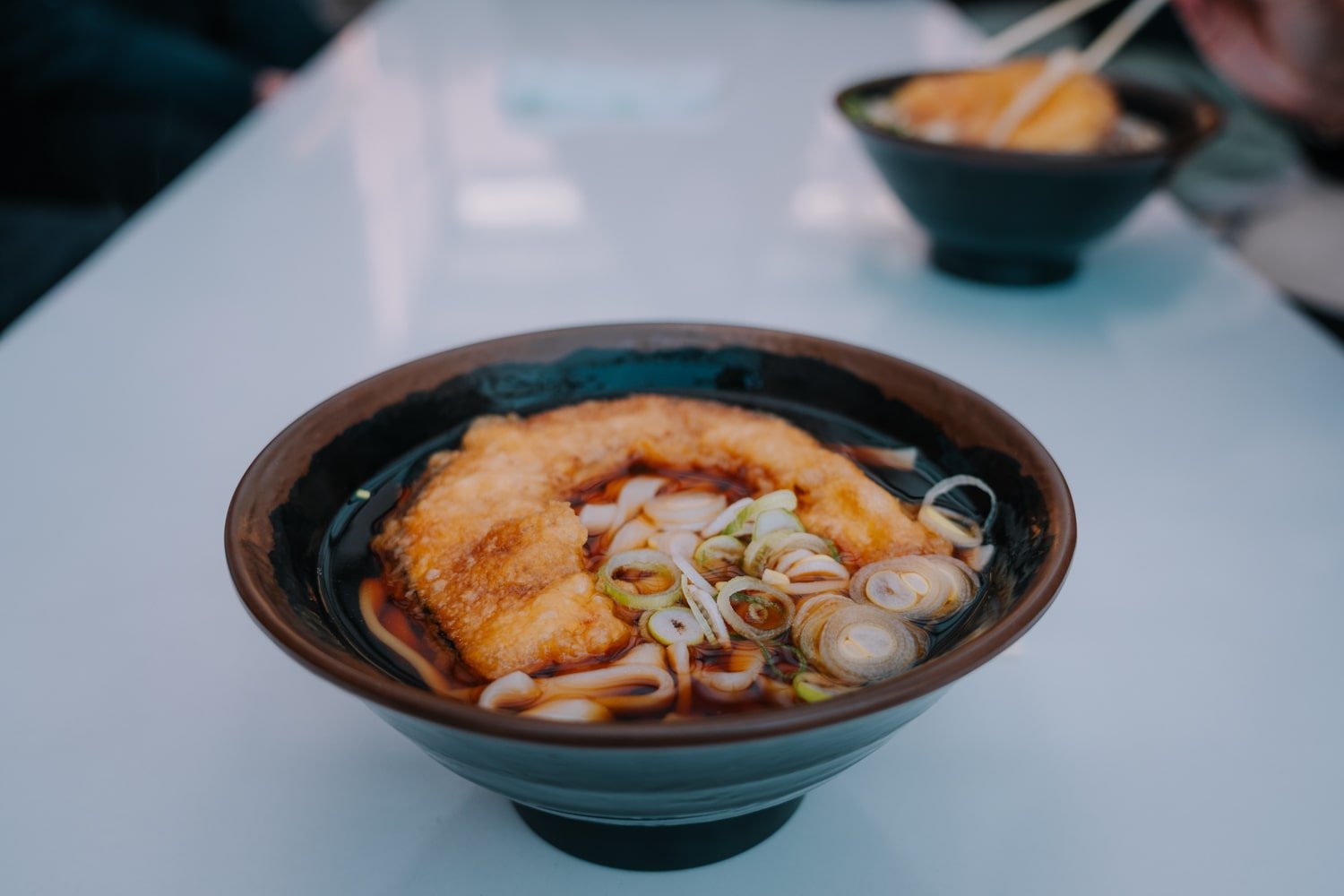
I’m sure you know of tempura already, but if not, you’re in for a mouth-watering discovery!
Tempura is lightly battered, deep-fried seafood or vegetables.
It is another Japanese food staple you will find across Japan and in many Japanese dishes.
I’ve had tempura as street food (the jumbo shrimp and sweet potato are my favorite!) and as complimentary sides in many of the meals featured in this Japanese food list. And each time, it always hits the spot!
18. Gyoza (Potstickers)
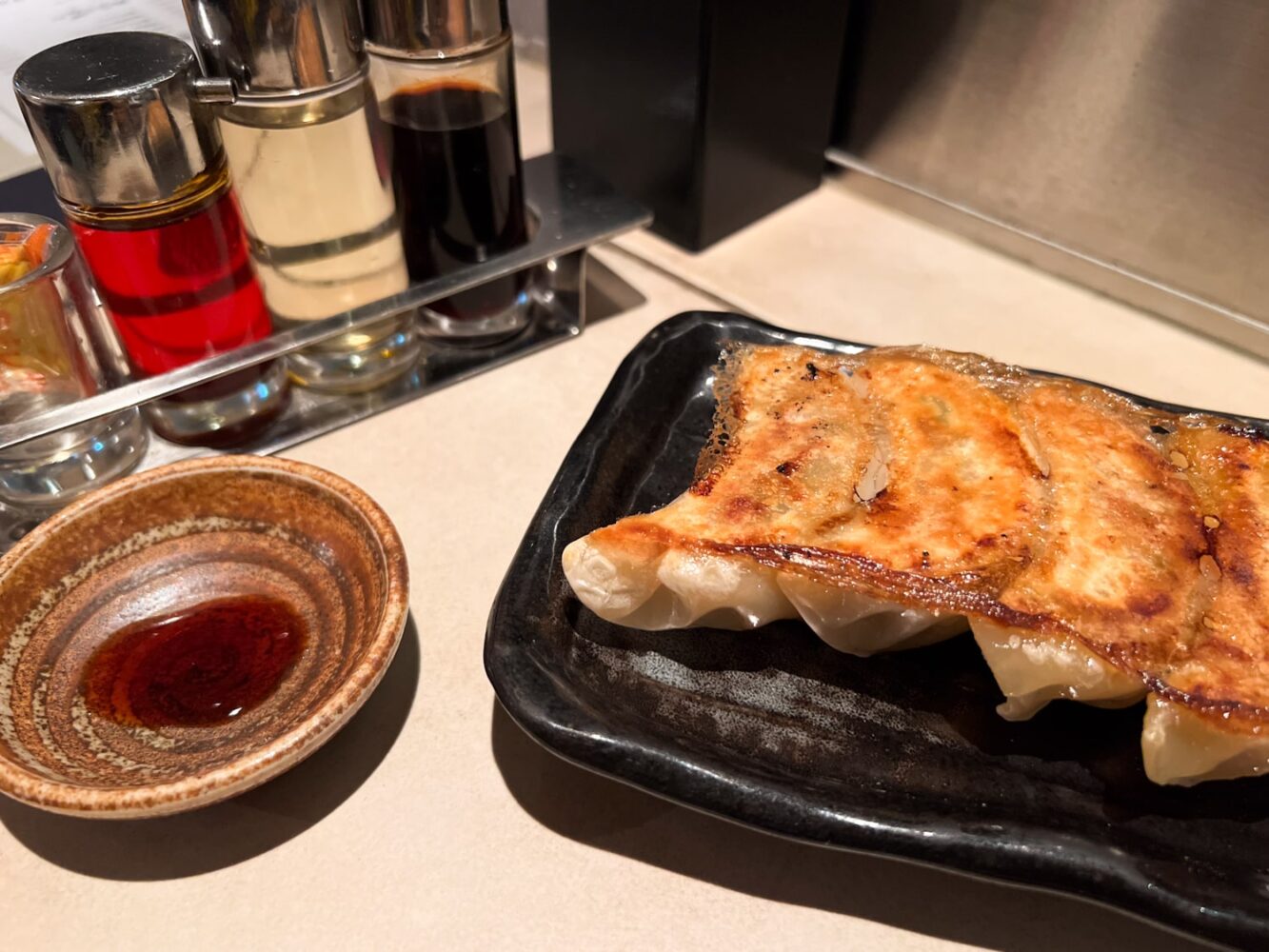
Gyoza are, essentially, Japanese dumplings or potstickers.
Dumplings are one of my favorite foods in general, and I love trying different kinds around the world (for example, xiaolongbao in Taiwan and momos in Nepal, but the Japanese (of course) have a special kind of their own.
Japanese gyoza are characteristically pan-fried and lightly steamed. This cooking method makes them both crispy and chewy.
Take a bite into one, and you’ll be graced with a flavorful explosion of minced meat such as pork or chicken, vegetables, and seasonings.
Gyoza are served with a tangy dipping sauce—typically a mix of soy sauce and vinegar—or the yuzu-based ponzu sauce.
19. Ramen
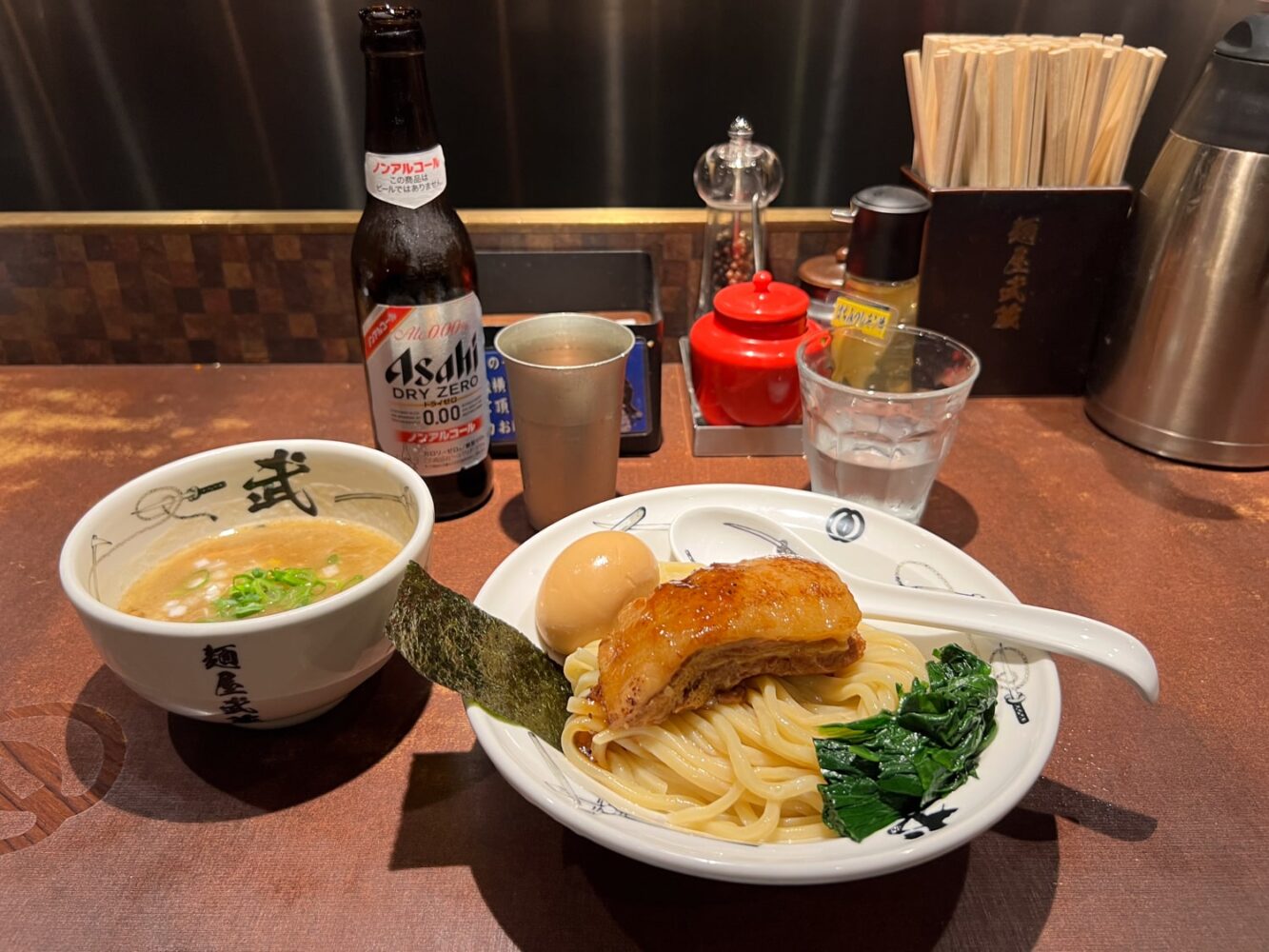
Last, on this Japanese food list (but certainly not least), we have ramen (pronounced raw-men).
Japanese ramen is a global phenomenon, so I’m sure you are already familiar with the taste of this delicious dish. But did you know there were several types of ramen in Japan?
- Shoyu ramen
- Tsukemen ramen
- Miso ramen
- Tantanmen ramen
- Abu ramen (abura soba)
- Tonkotsu ramen
- …to name a few!
While the ICHIRAN Ramen chain is among the most popular restaurants across Japan to enjoy a hearty bowl of traditional Tonkotsu Ramen, please do wander off the beaten path to find ramen shops that are just as good (or even better) but aren’t as well-known.
Some of my most memorable noodle experiences eating tonkotsu ramen and tantanmen are in back alley restaurants without queues.
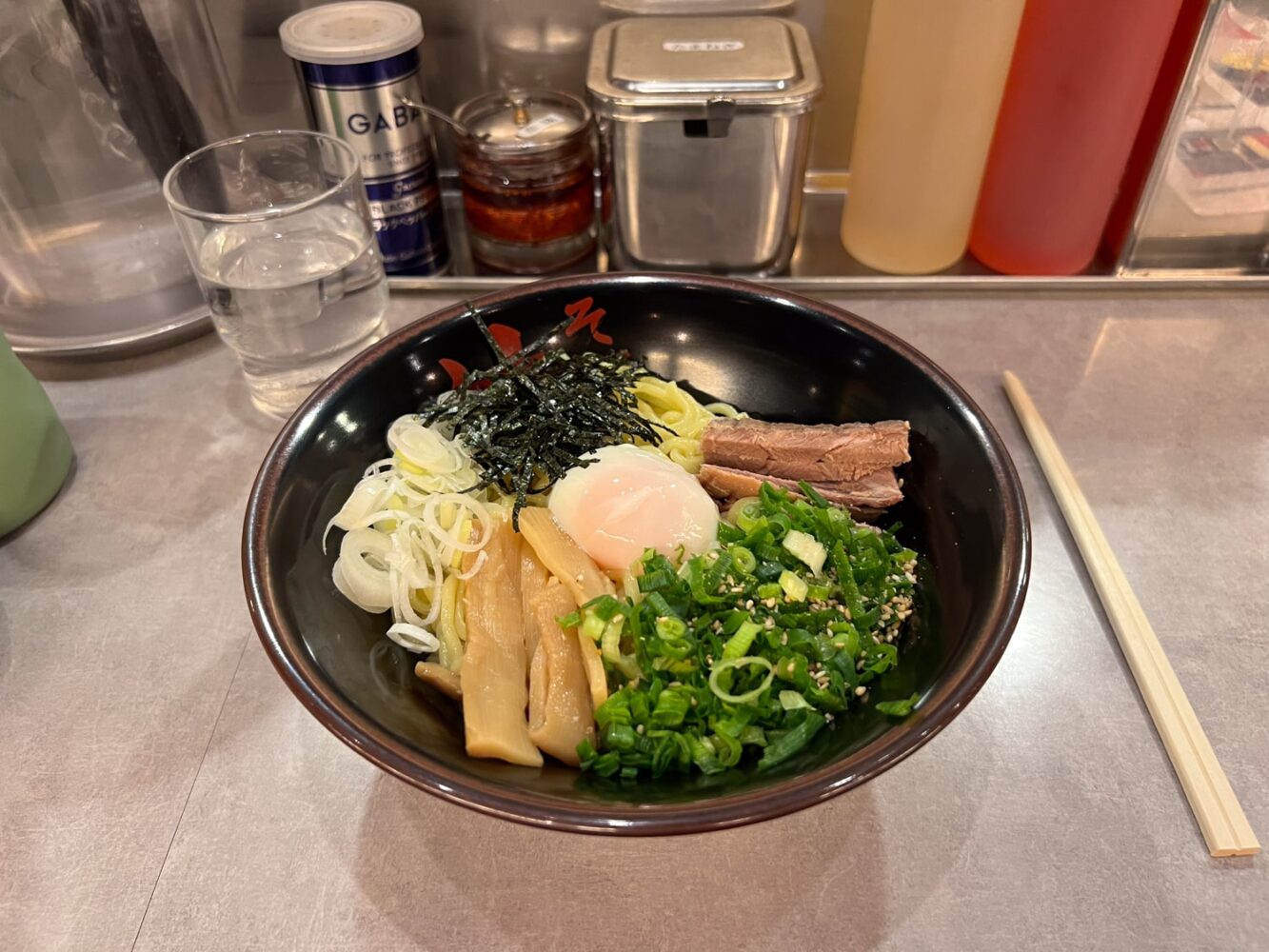
While there are dozens, even hundreds, of other Japanese dishes to try, I hope this list gives you a good starting point to discover and understand all the wonderful and weird Japanese food during your trip!
Have other must-try dishes or foods to recommend? Drop them in the comments!



